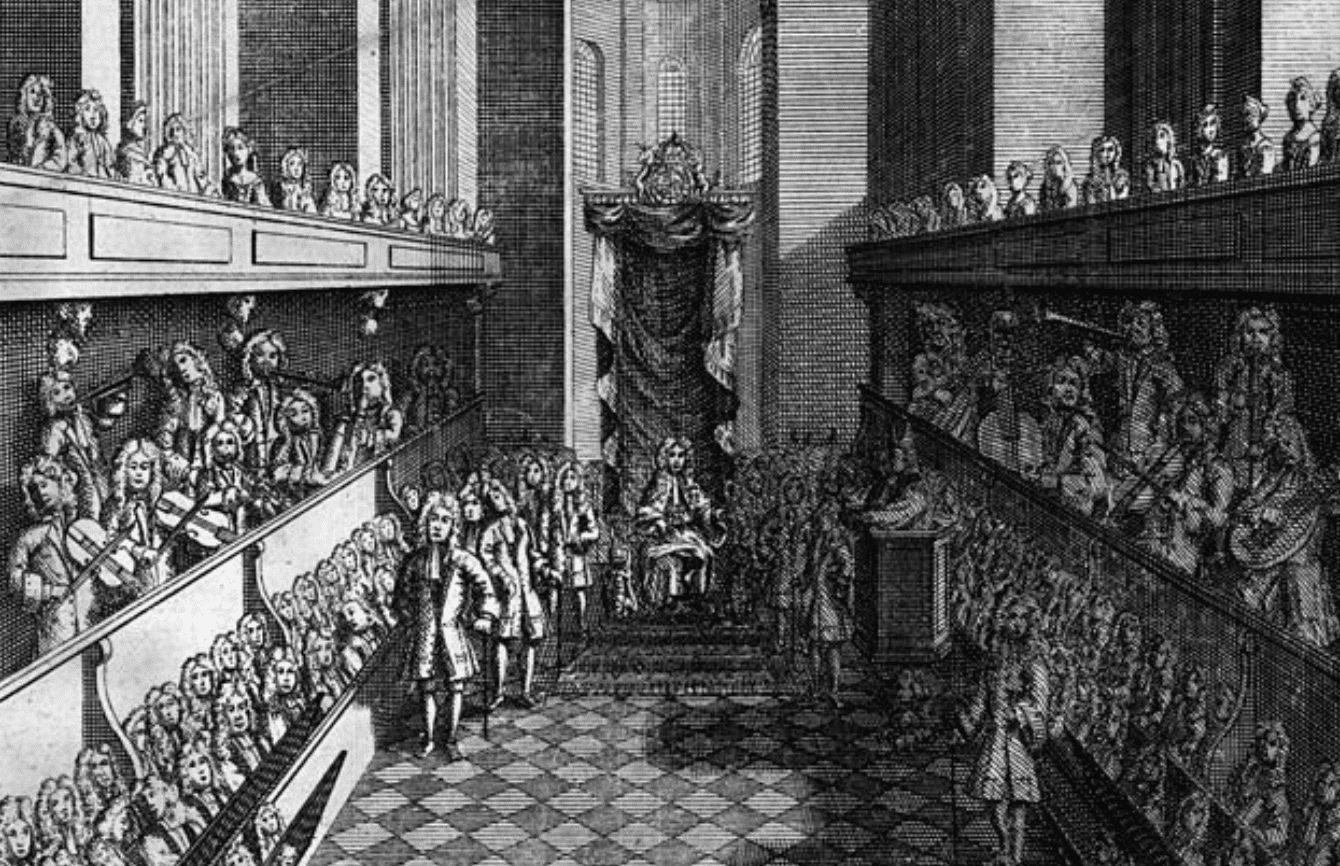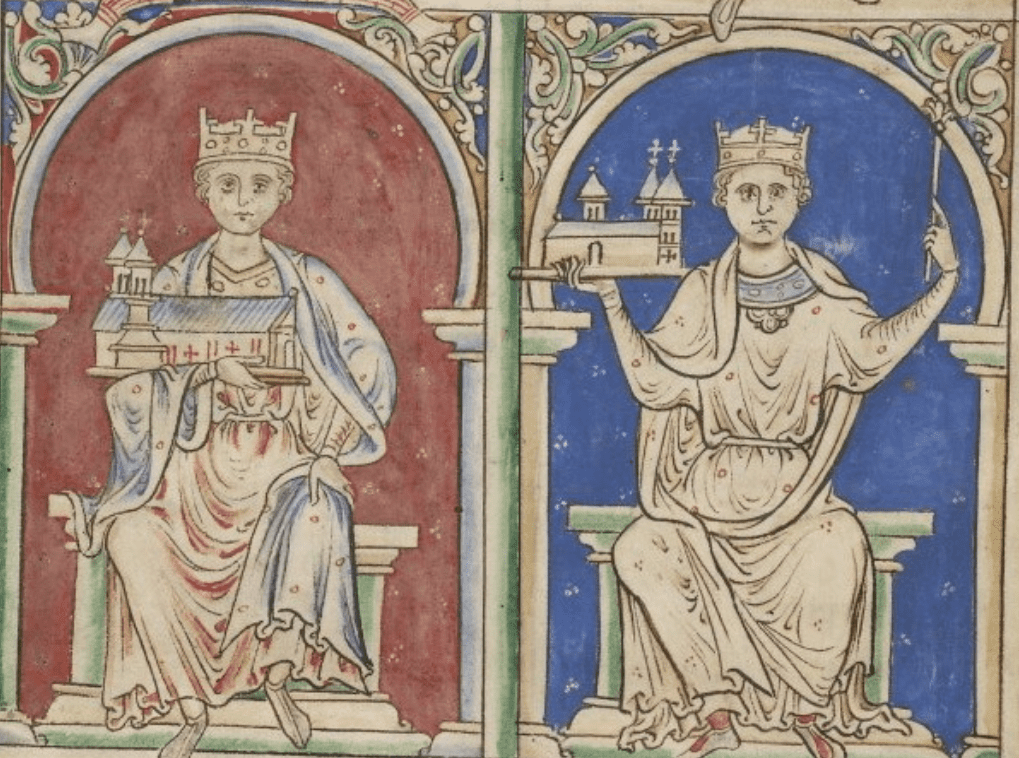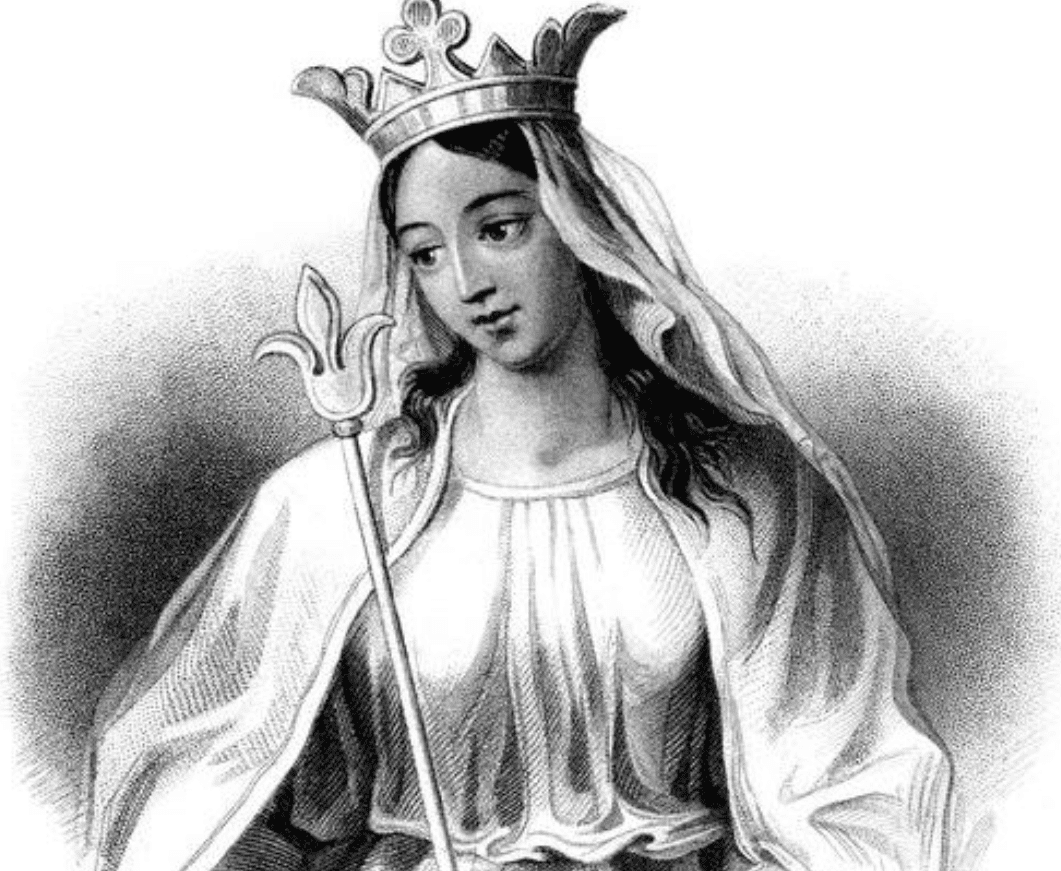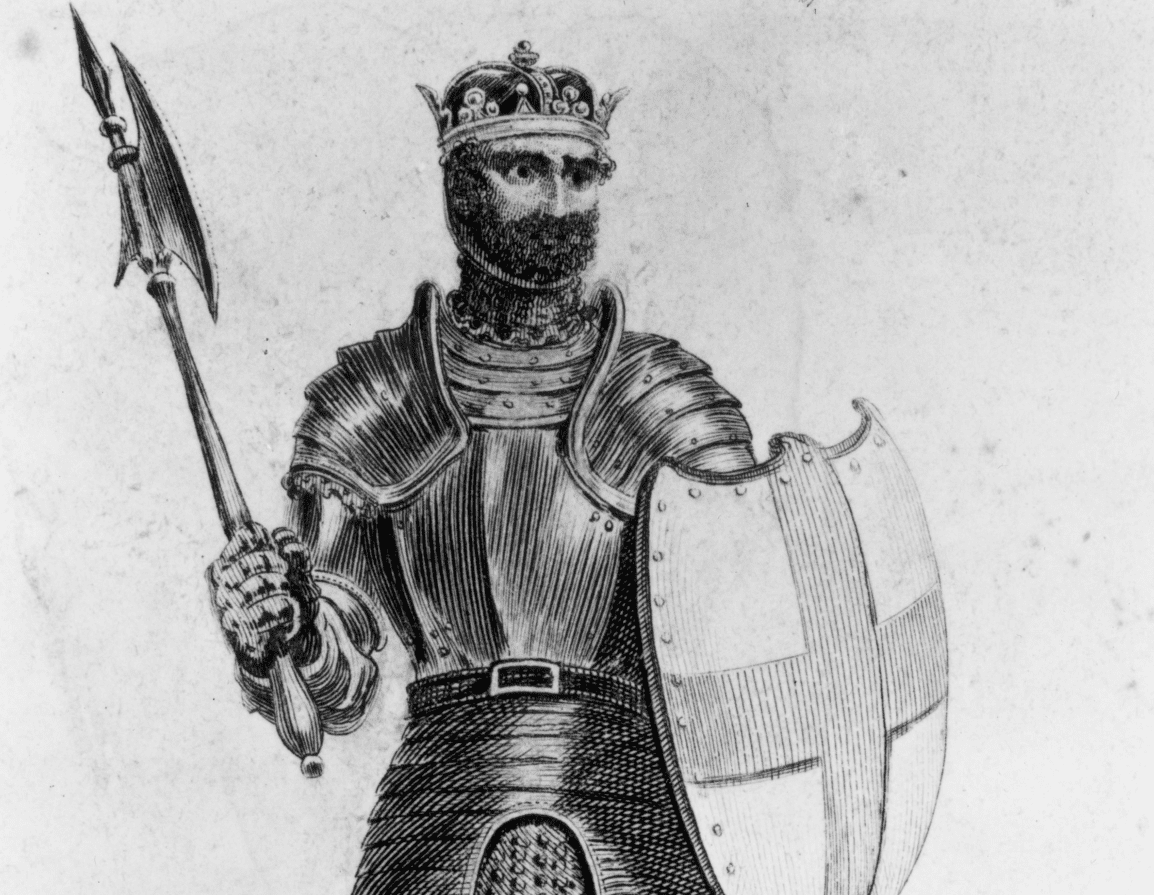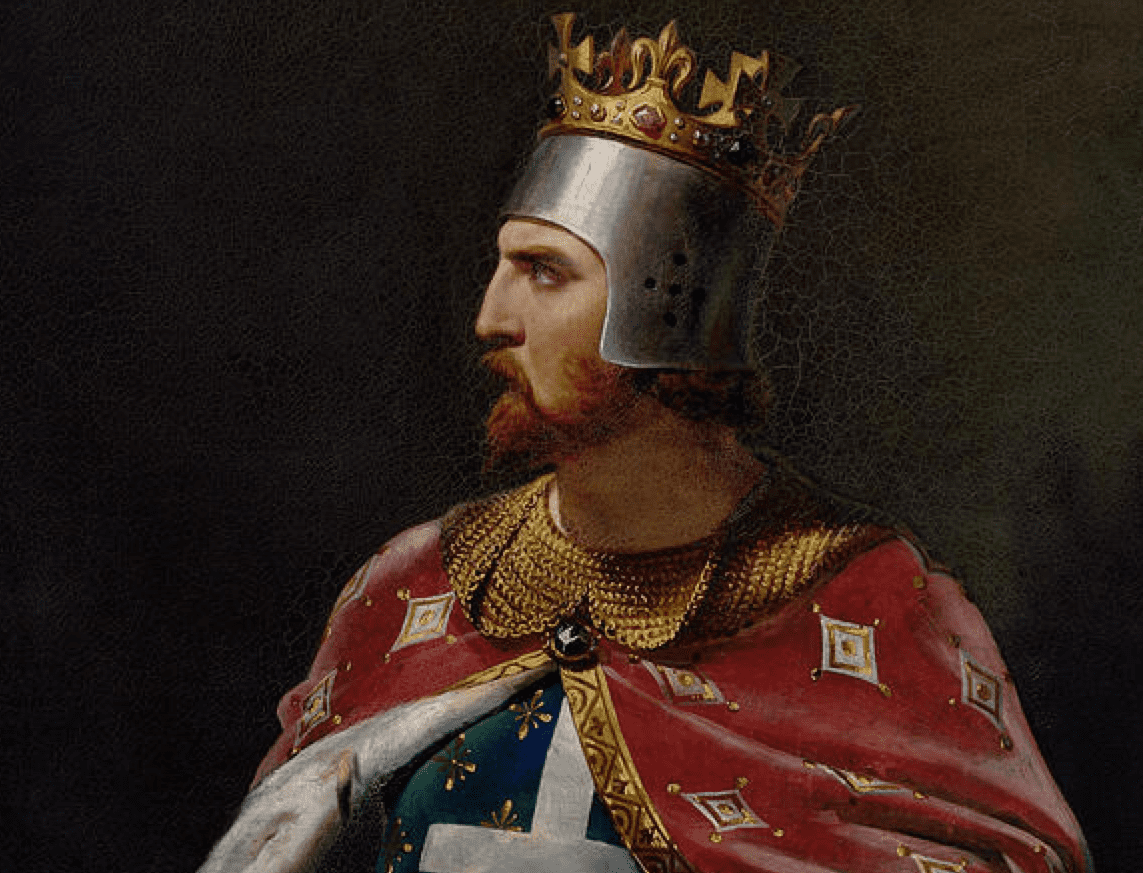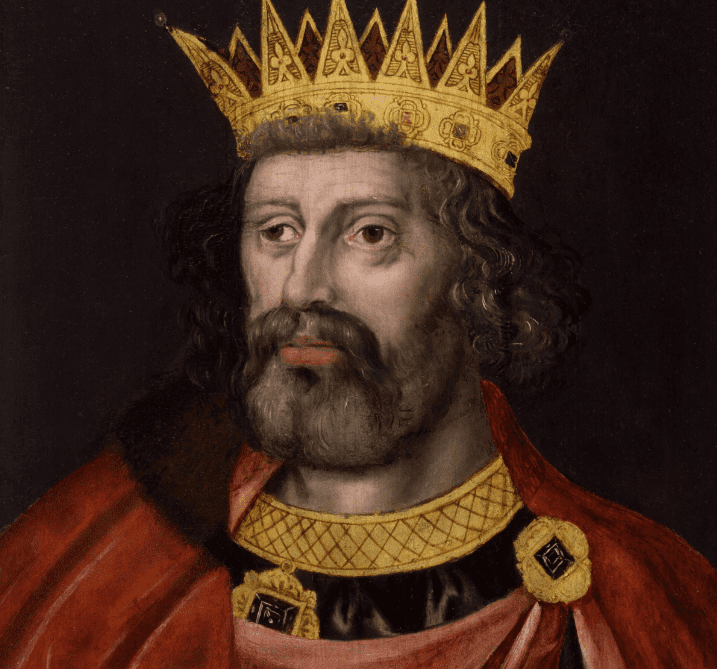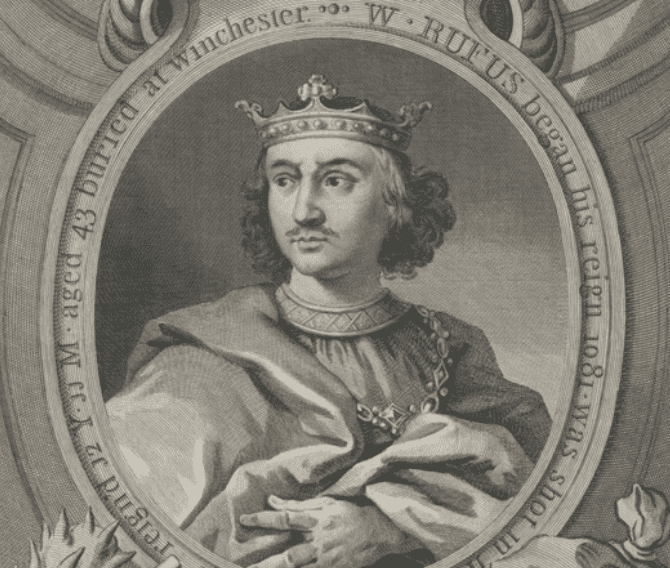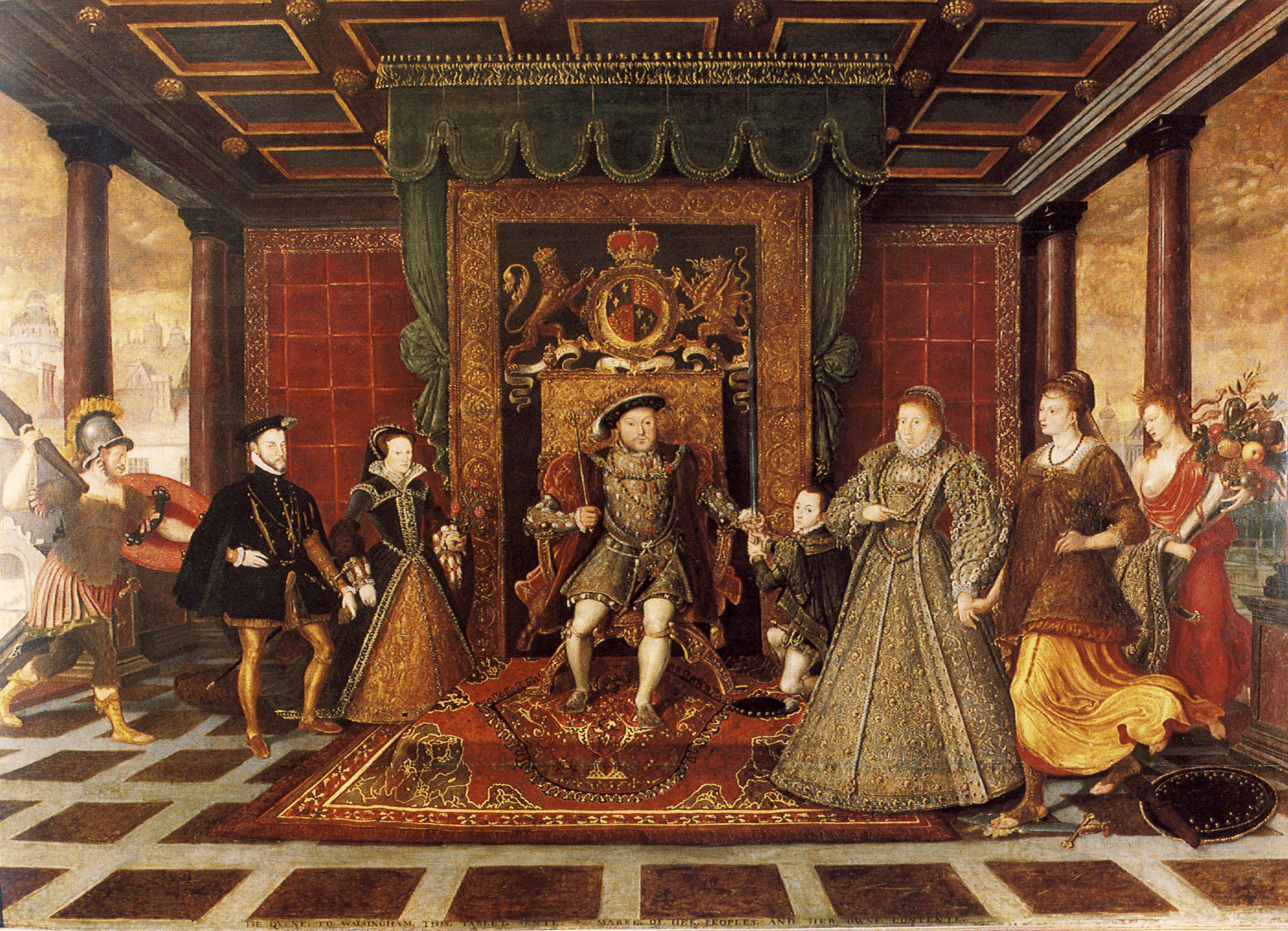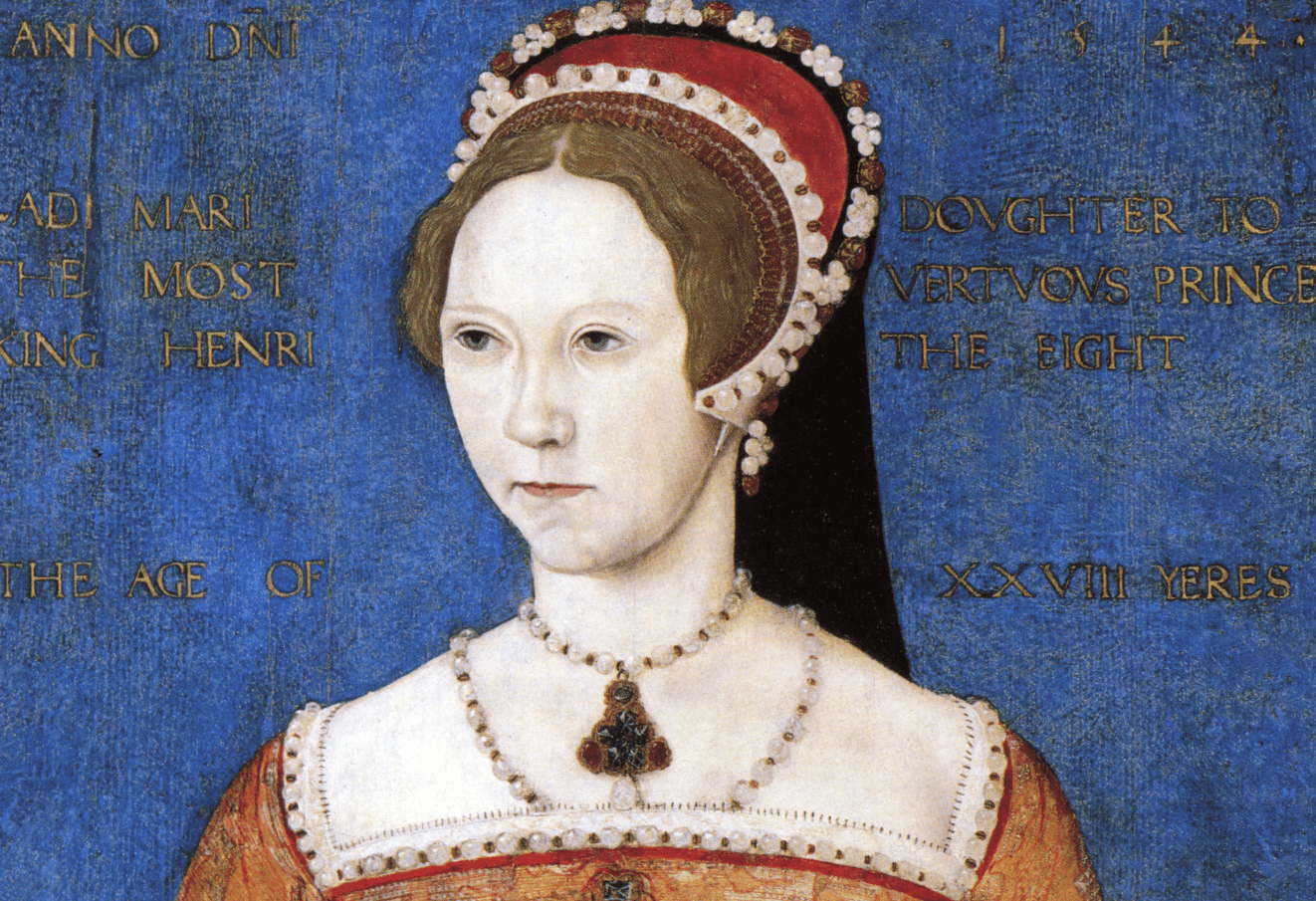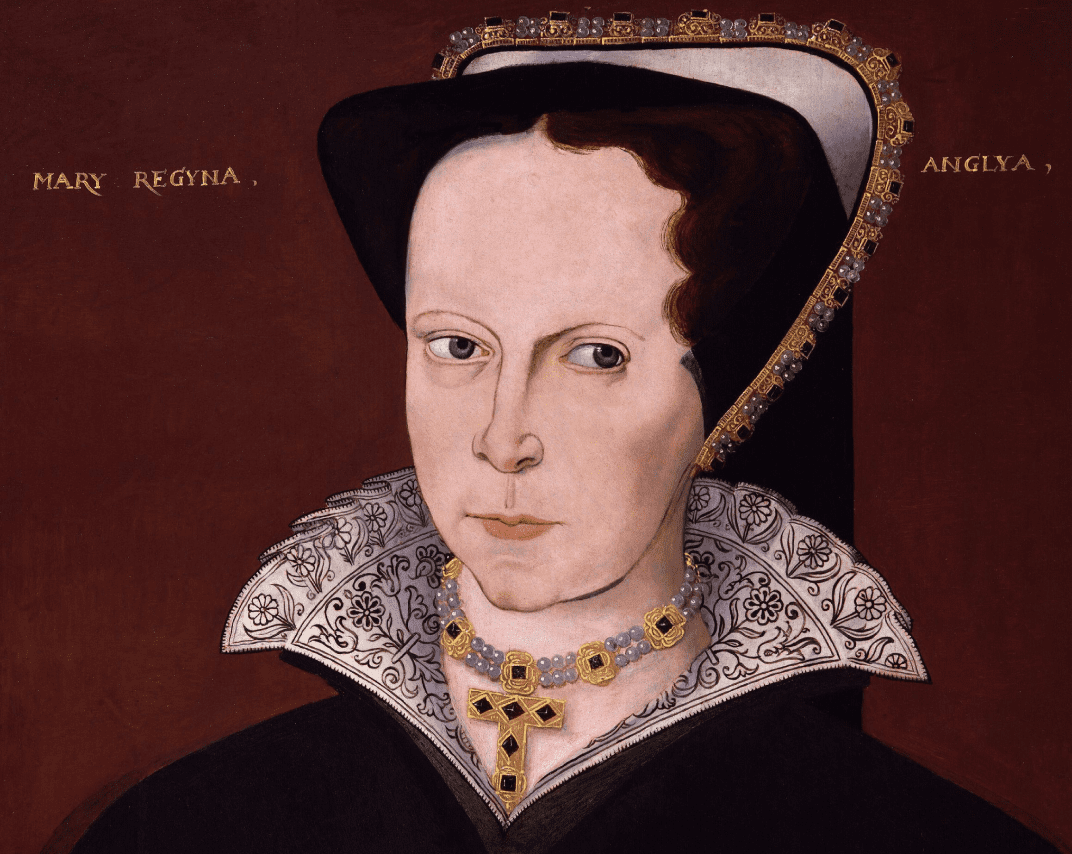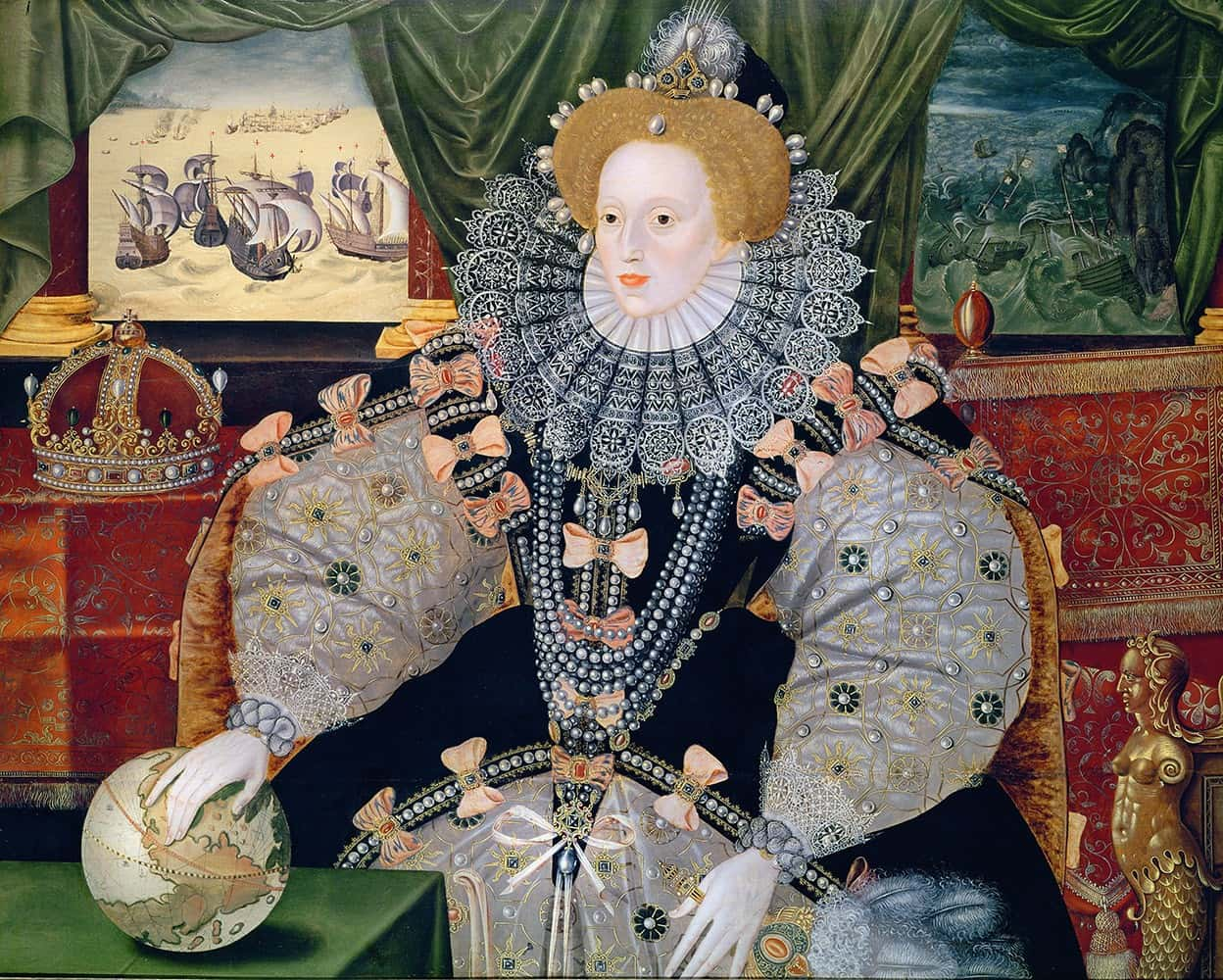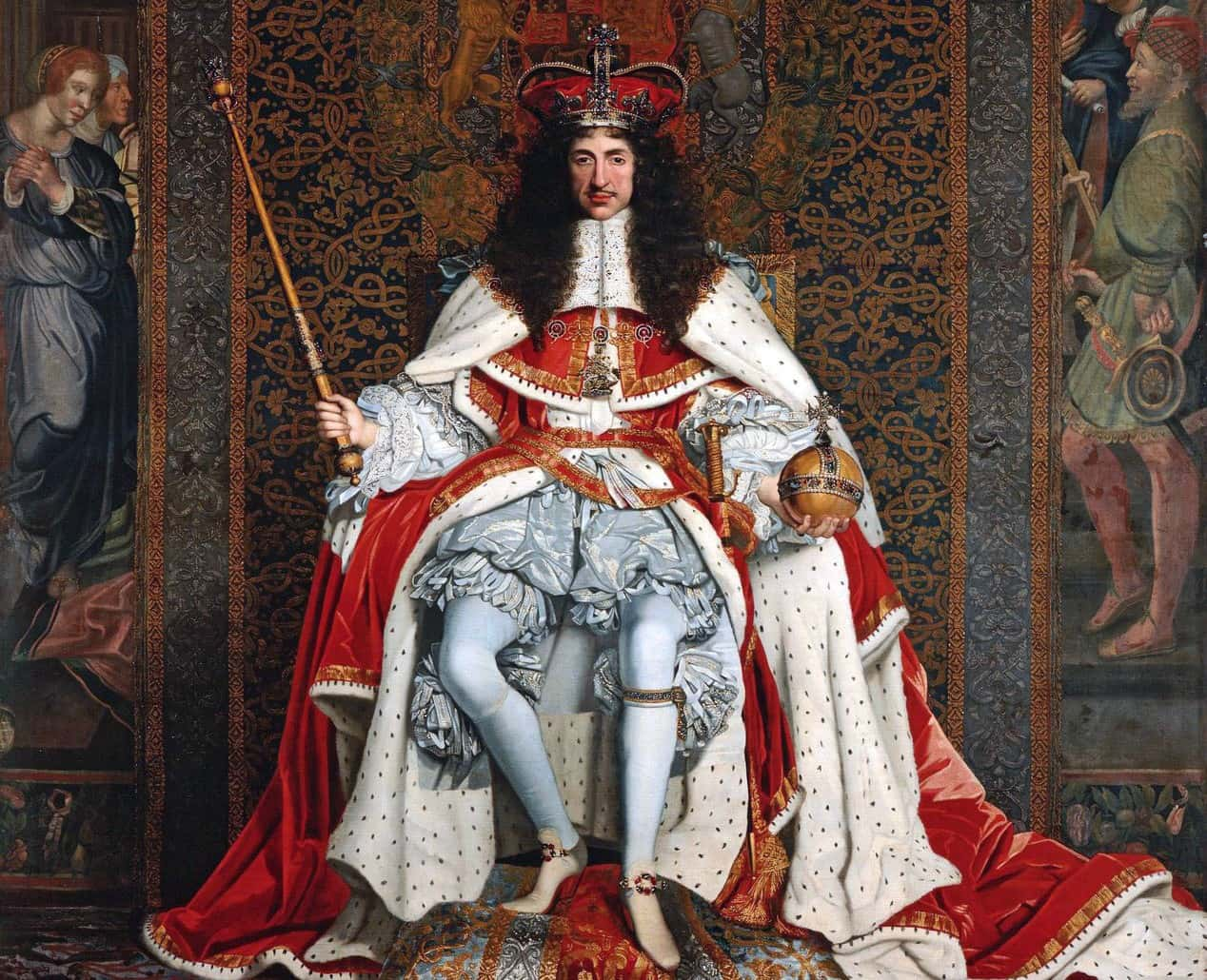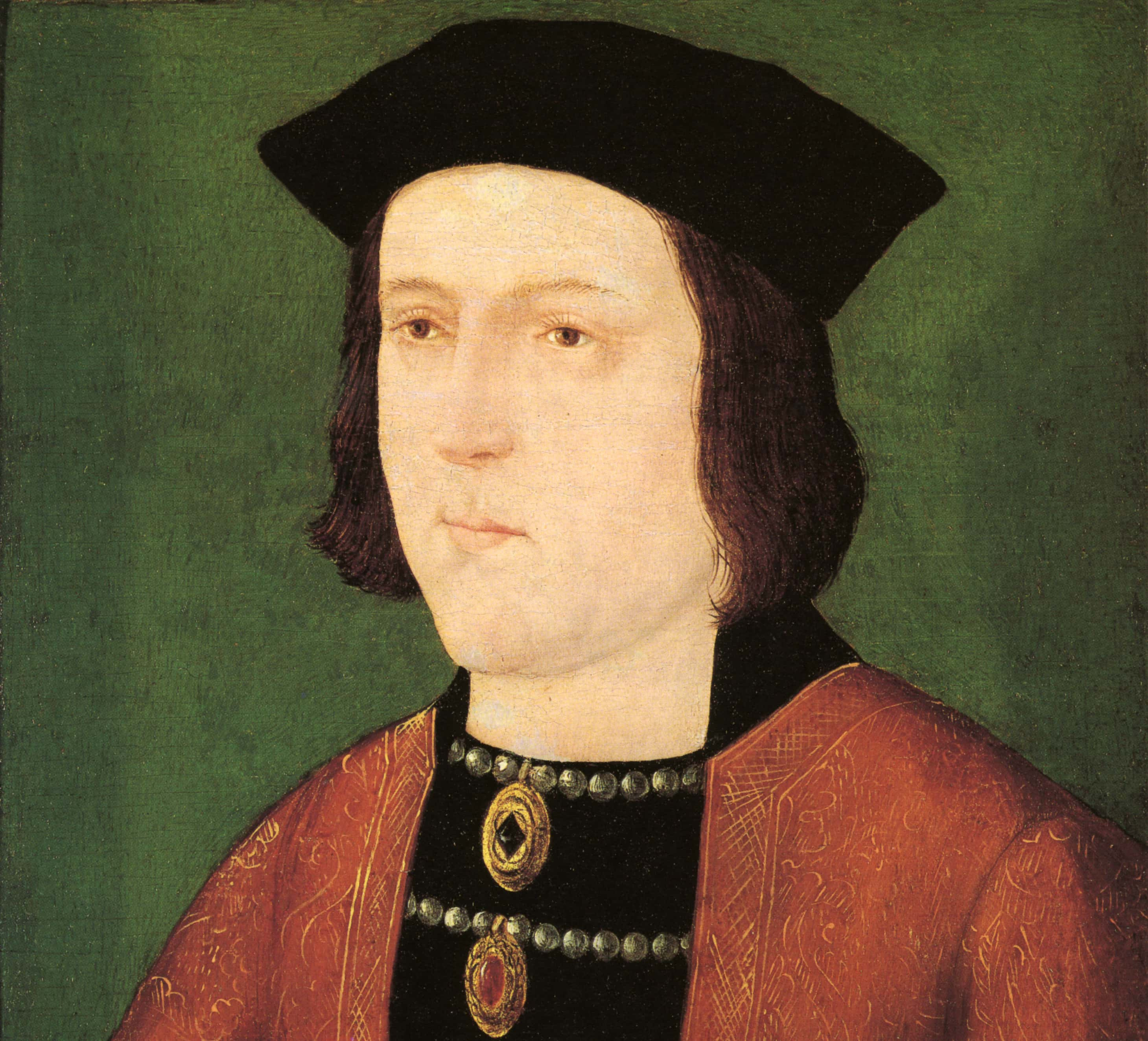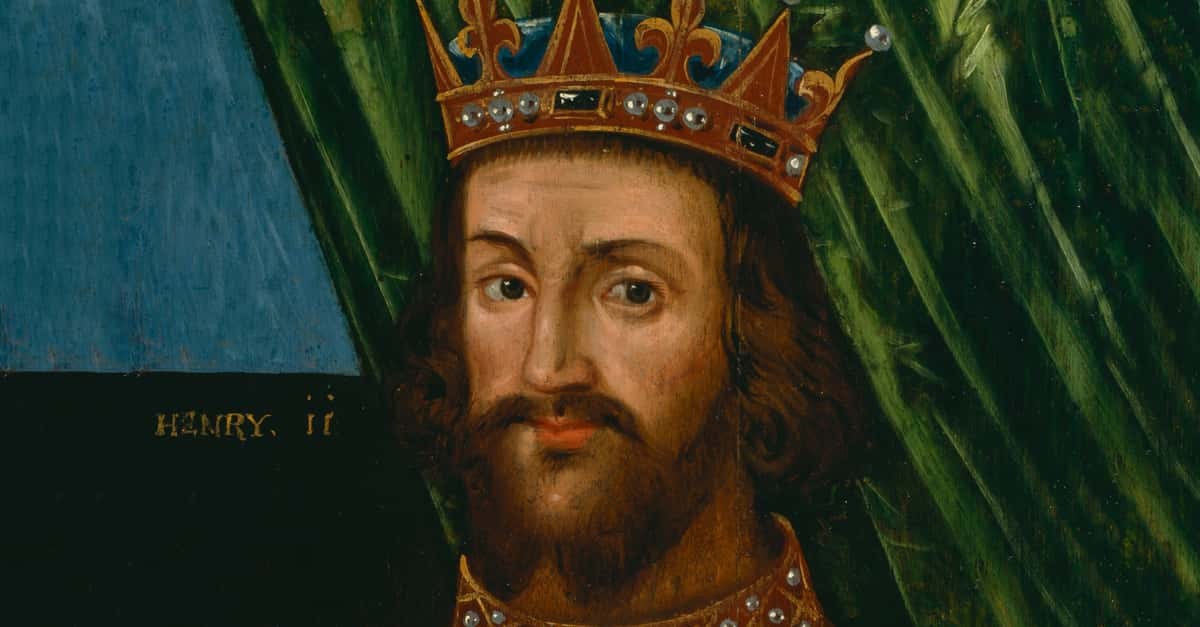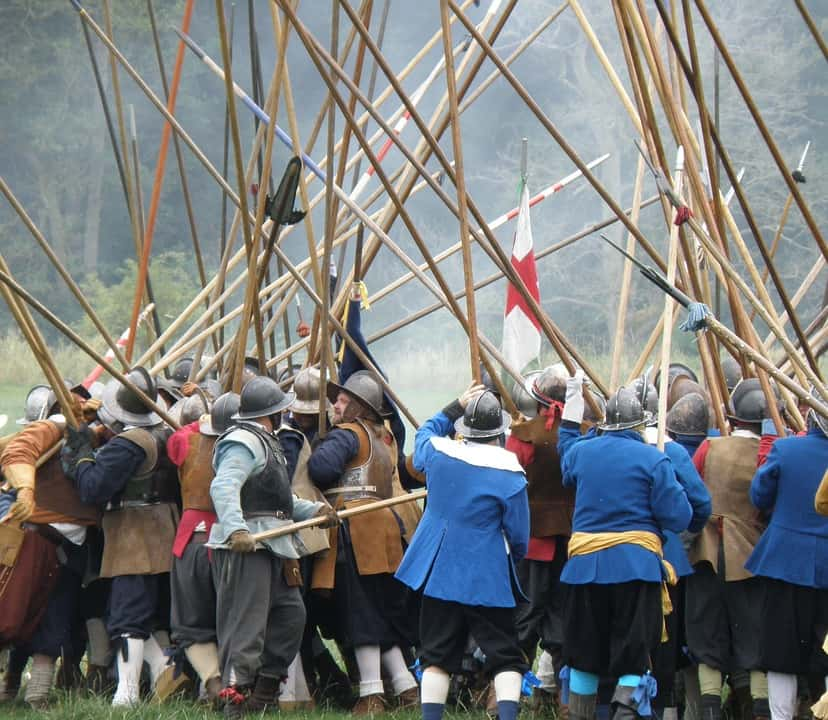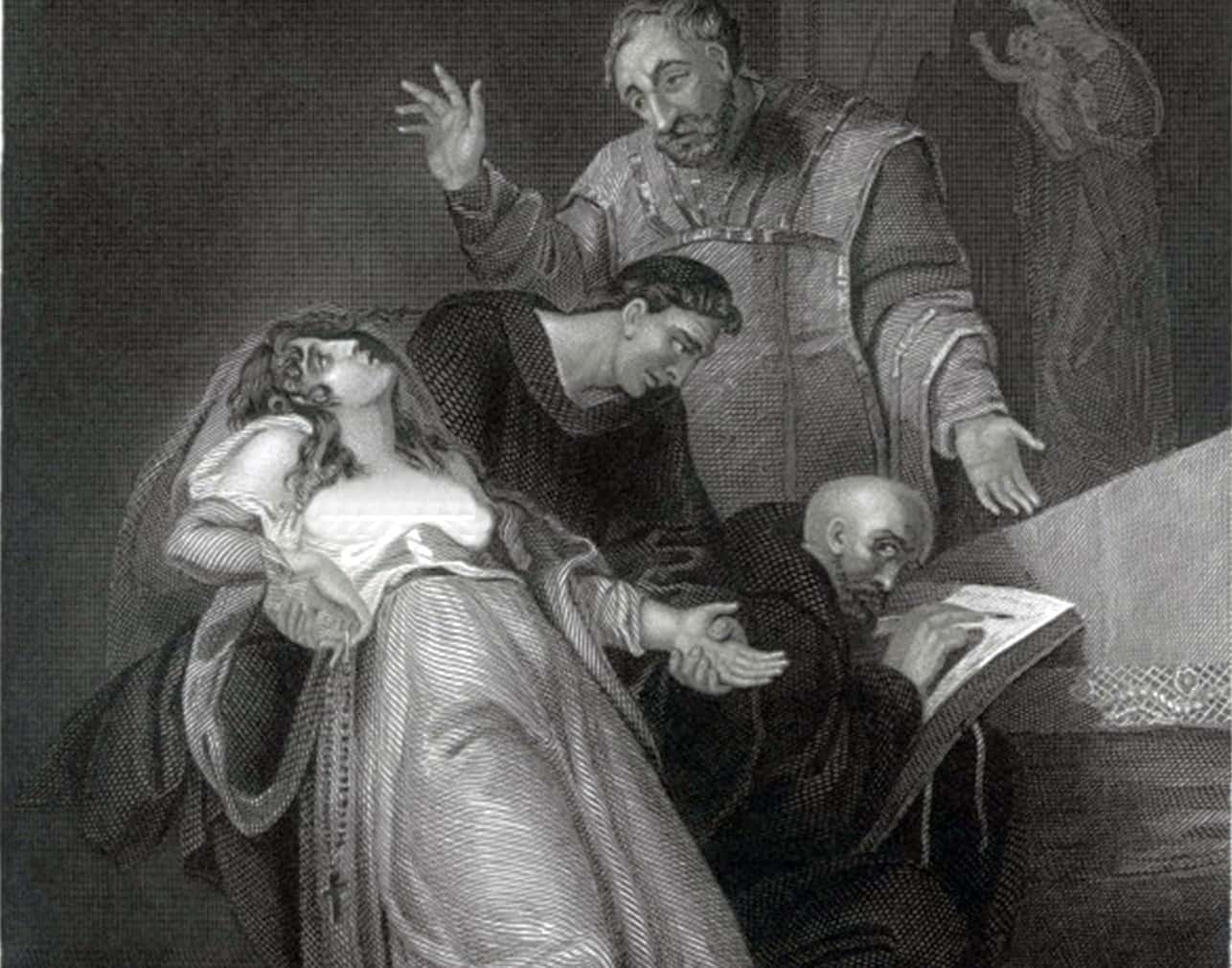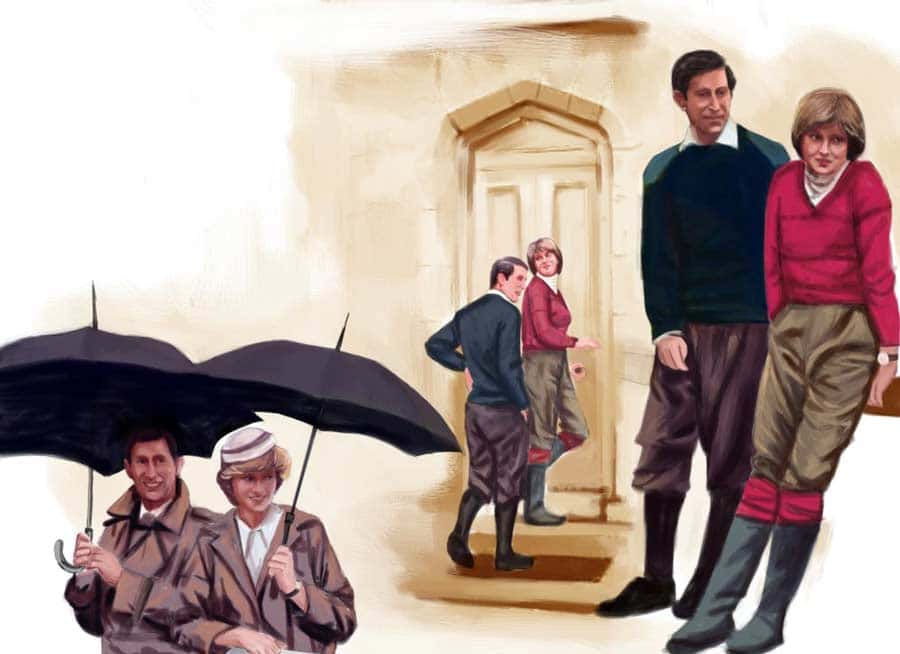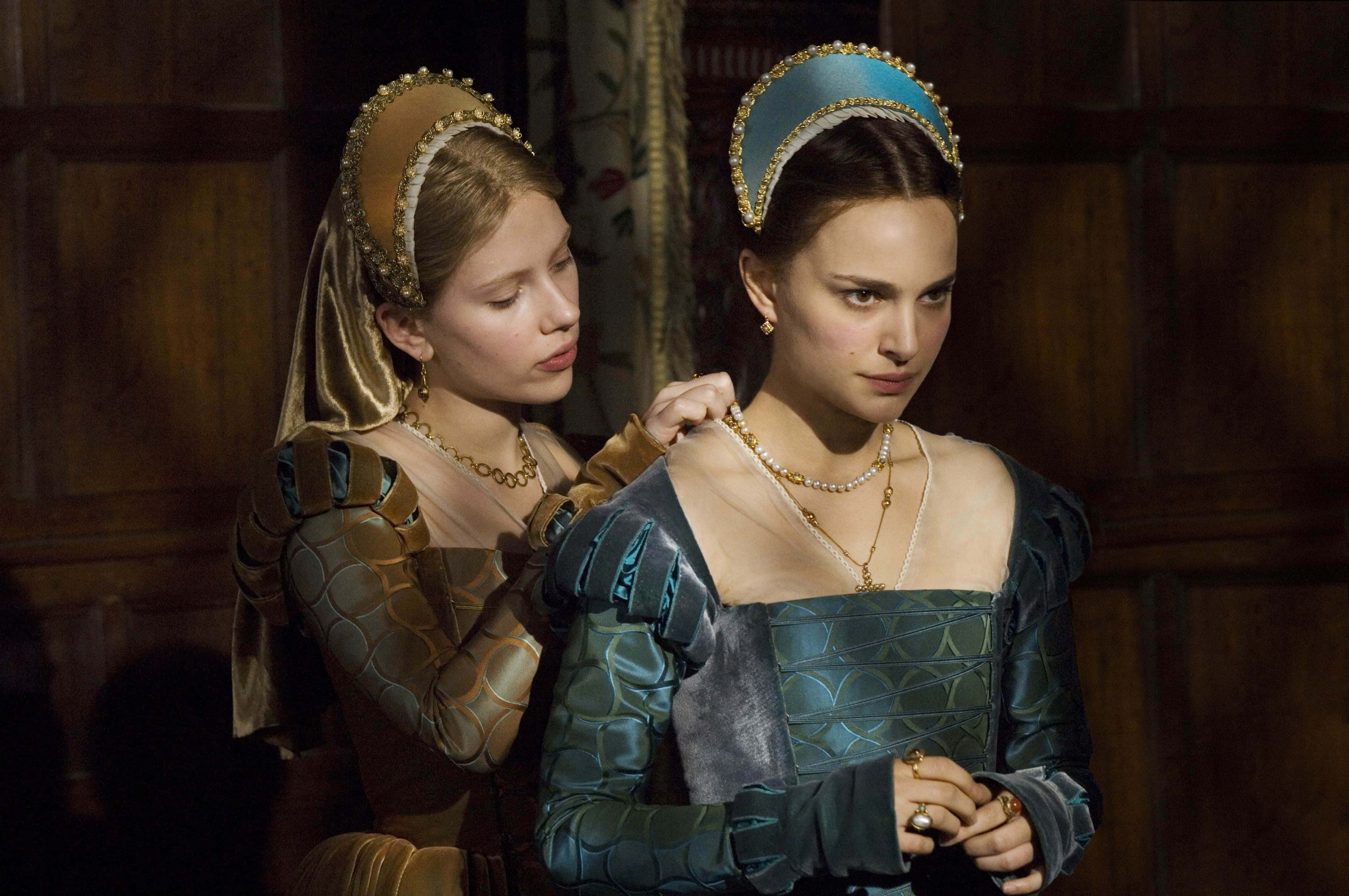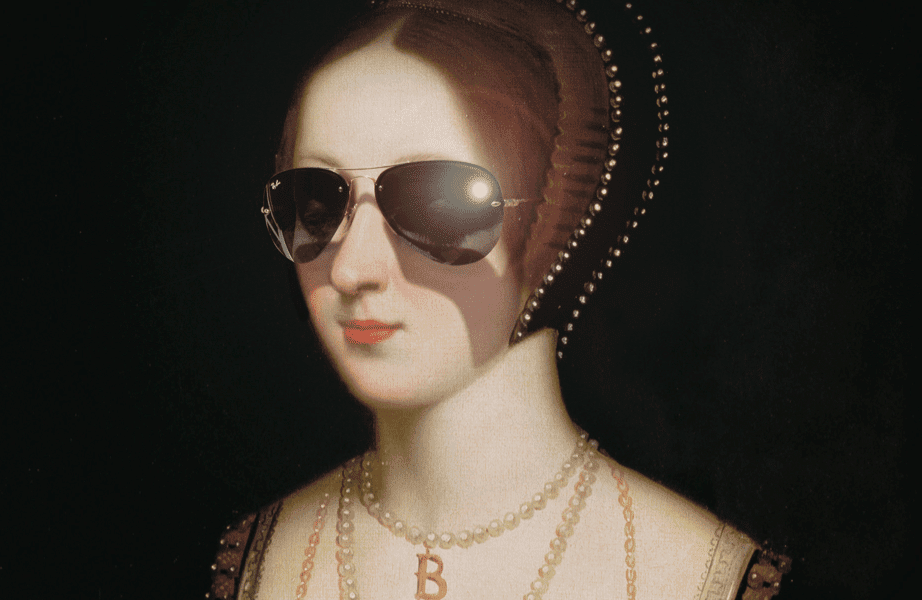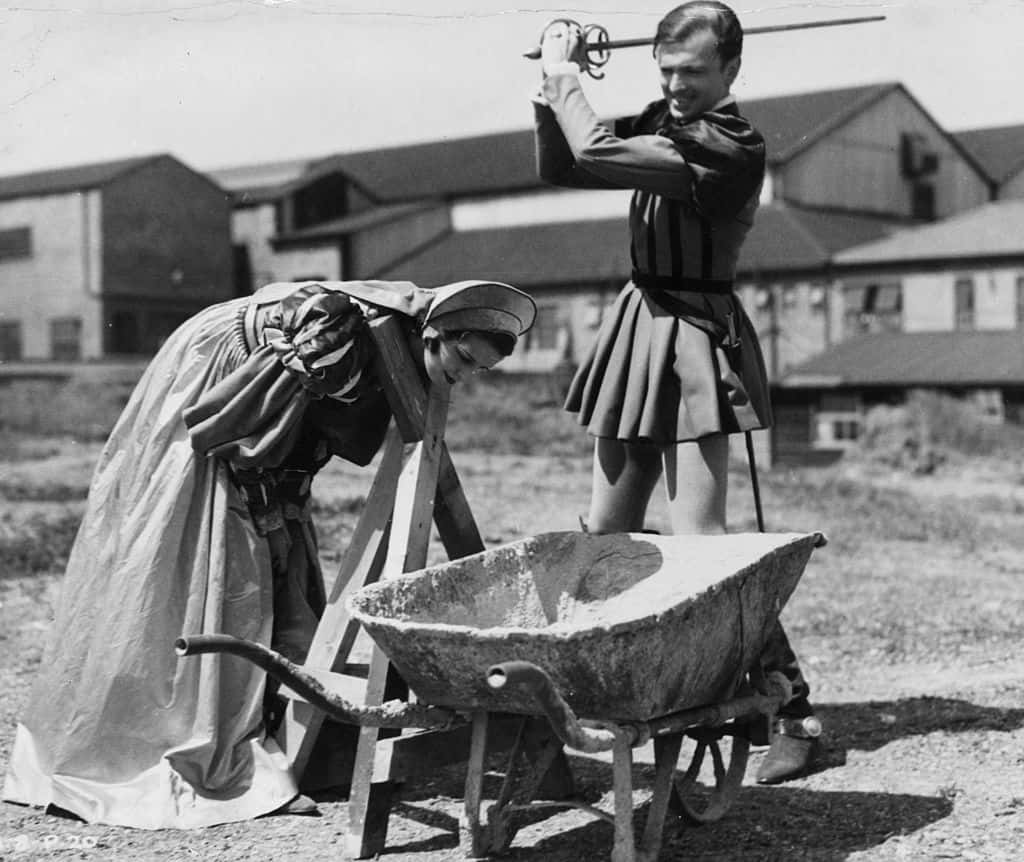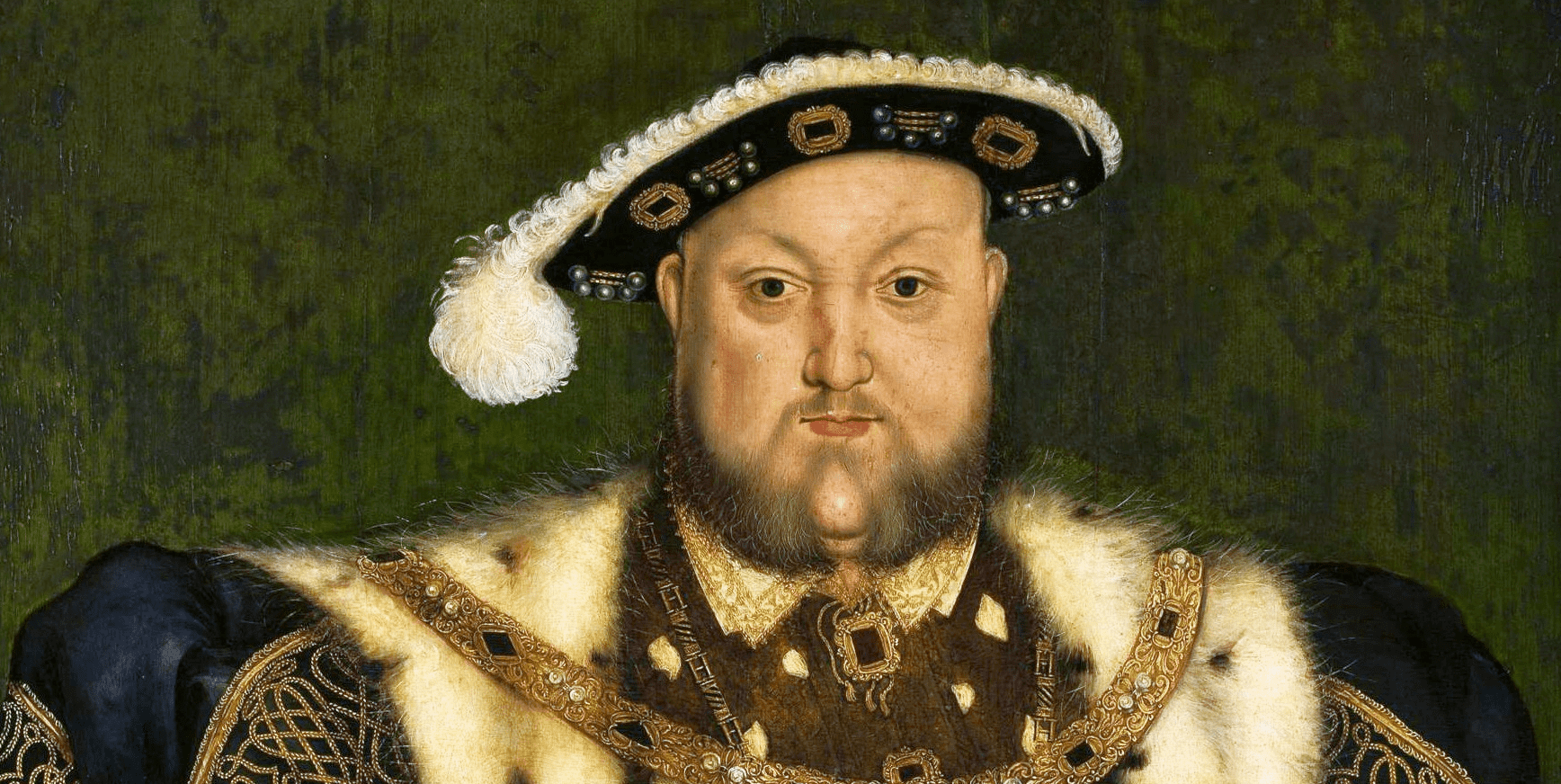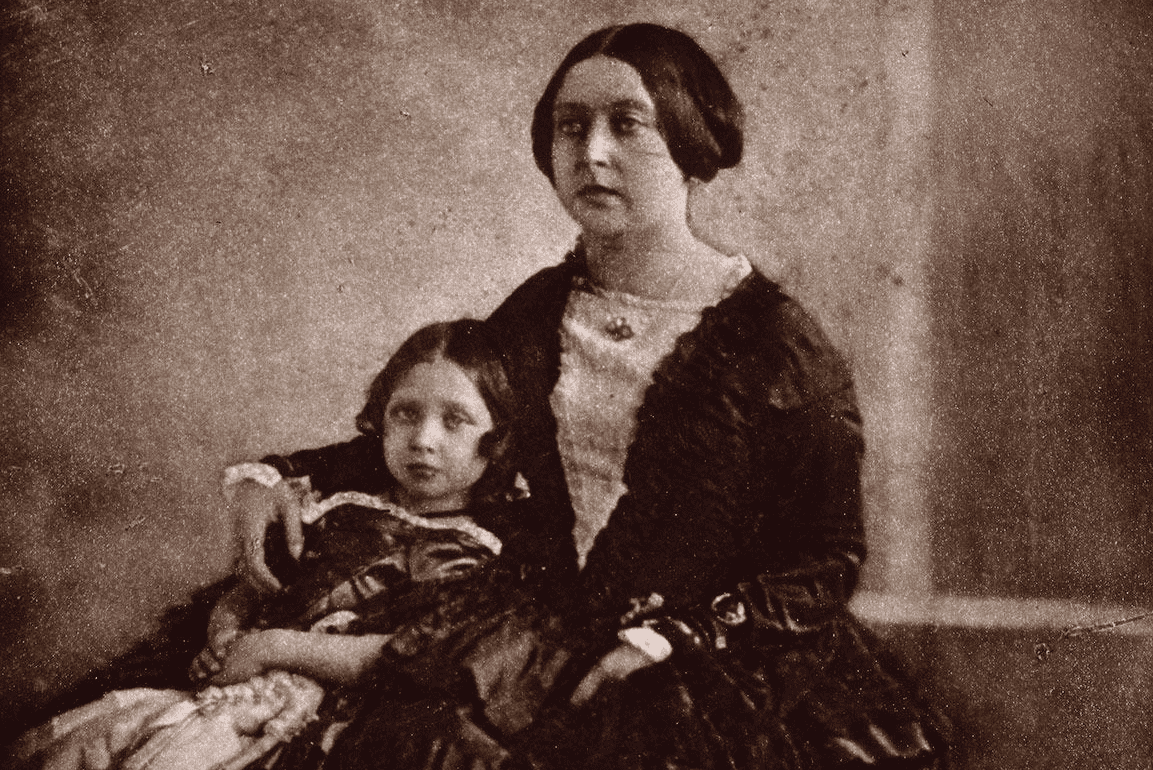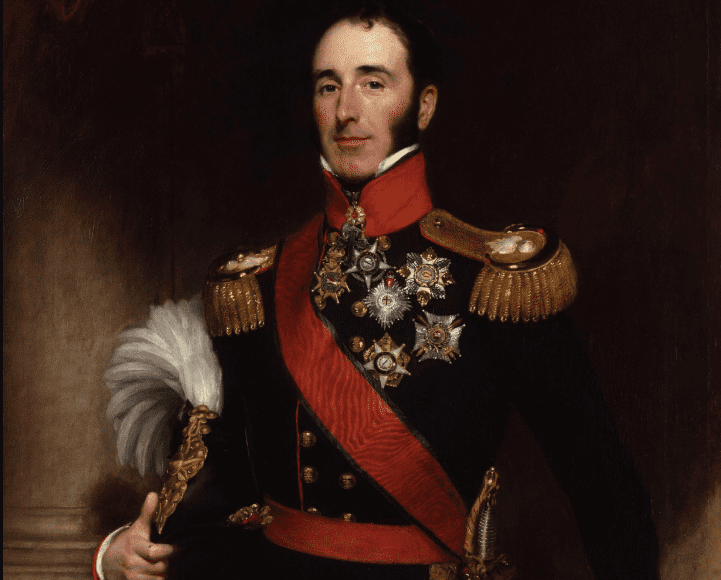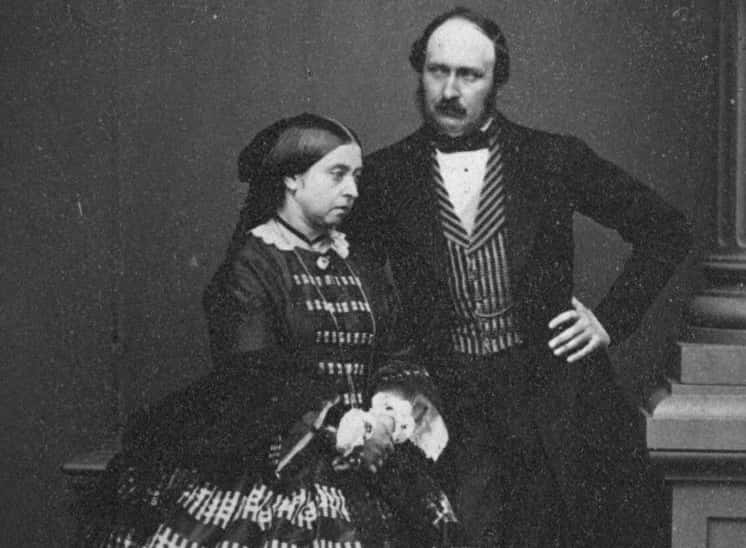Since it was first established, England has borne witness to many Kings and Queens. They've seen war, scandal, court intrigues, and battles for the throne. These 50 facts will hopefully provide you with more insight into what makes their past so fascinating.
English Monarchs Facts
1. Great Men
Only two English monarchs have ever earned the historical epithet “the Great” after their first names. These men are Alfred the Great (849-899 AD) and Cnut the Great (995-1035 AD).
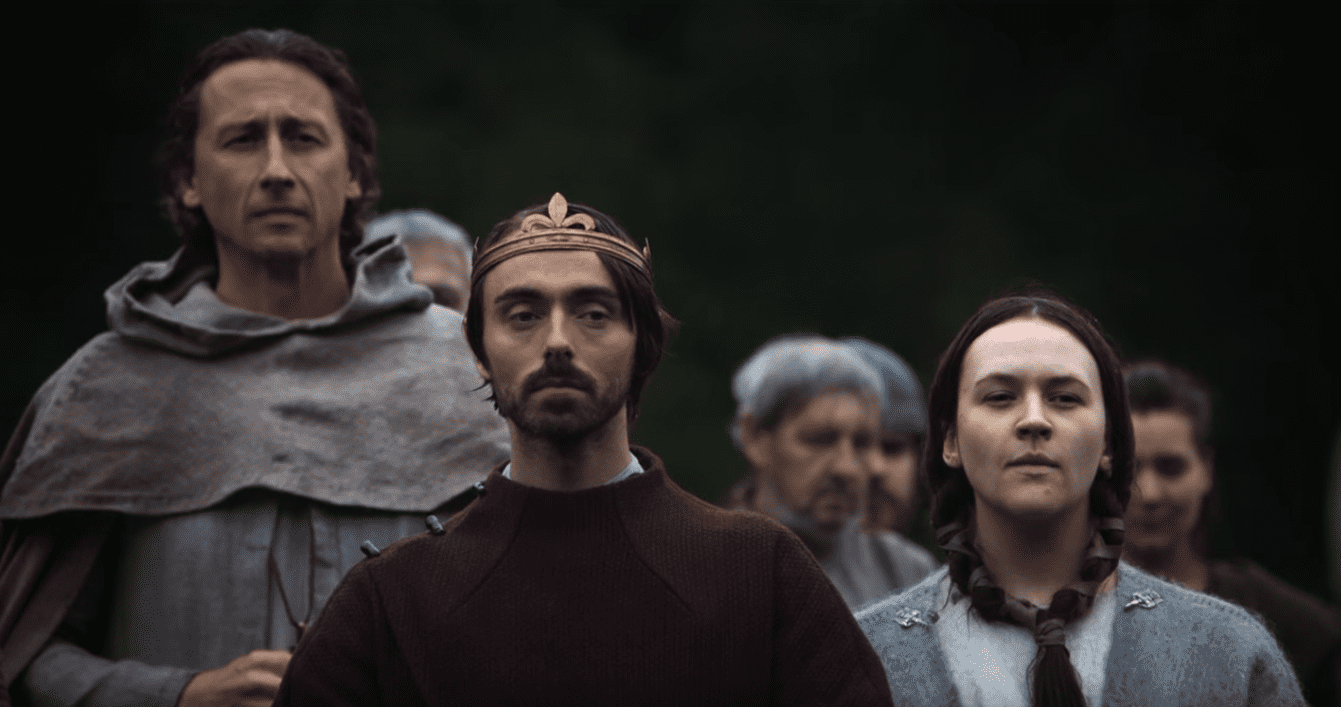 The Last Kingdom, Carnival Film & Television
The Last Kingdom, Carnival Film & Television
2. Long Live the King
The monarch of England—and the United Kingdom—does not die. While generations of people have died while anointed as monarch, the system is arranged so that when the ruling monarch dies, their heir is instantly sworn in to succeed them. This way, the Royal Standard—AKA the flag associated with the Royal Family—never flies at half-mast, since the king or queen is still alive and well.
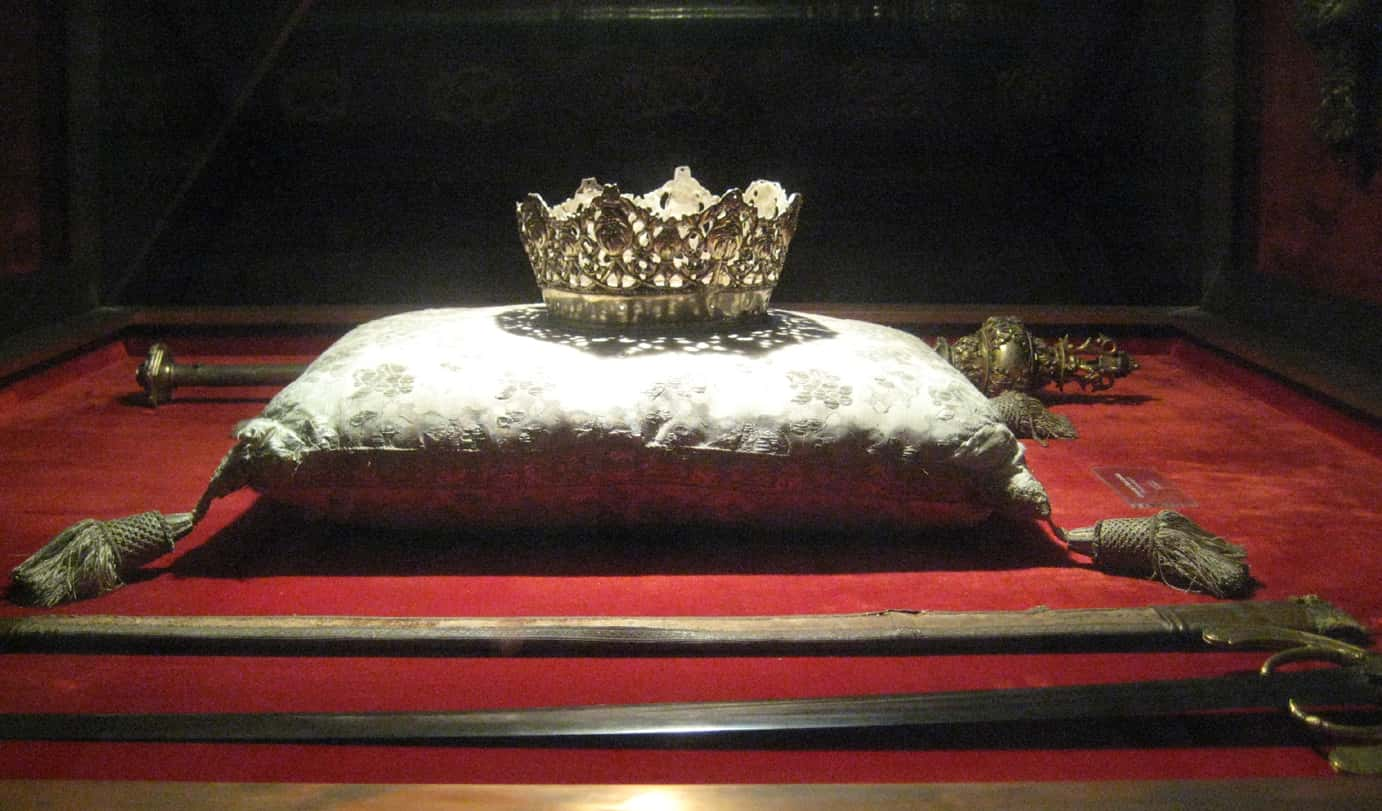 Wikimedia Commons, user:shakko
Wikimedia Commons, user:shakko
3. Nice Try, Gramps
Despite claiming to be “King of the Anglo-Saxons,” Alfred the Great was never king of all England. The first man to do so was his grandson, Æthelstan. He was first known as “King of the Anglo-Saxons” but eventually claimed the long-coveted “King of the English.”
4. Impressive Record
The longest-running dynasty of English history was the Plantagenets. This French/English family ruled England from Henry II’s coronation in 1154 to the death of Richard III in 1485. That’s 14 kings over a period of more than 300 years.
5. We Want Your Birth Certificate!
Henry V is one of the most famous kings in the history of England, but for such a well-known and beloved figure, we have no idea when Henry V was born. Two different plausible dates exist for his birth due to an astrologer’s horoscope for Henry, and even that information may simply have been propaganda.
6. A Mad King in the Making
At the time of Henry V’s death, he had one son with his wife Catherine. This son, also named Henry, would go on to inherit the madness which affected his grandfather, Charles VI. Not only that, he would be the last Lancaster king to rule England before the War of the Roses led to his deposition and eventual murder at the order of the House of York.
7. “Your Epicness” Wasn’t Around Yet
The words “Your Majesty” seem like common usage to refer to any king, but the term actually began in England. Henry VIII decided that being called “Your Grace” wasn’t enough, as it referred to the fact that he only ruled by the grace of God. When he split from the Catholic Church, he wanted to lead based on his own undeniable right.
Thus, “Majesty” was introduced because of its Latin meaning referring to a divine being rather than just an ordinary king.
8. Those Wacky Cousins…
After the death of his son and heir, Henry I of England was forced to pick someone else to replace him. He wavered between his nephew, Stephen of Blois, and his daughter, Matilda. Henry I ultimately chose Matilda, but Stephen disputed the choice. Stephen invaded England as soon as Henry died, and then declared himself King.
Matilda and Stephen spent a good two decades fighting for the throne, a period known as "The Anarchy."
9. Does it Count?
In the year 1141, in the middle of all the political and military strife, Matilda ruled England while battling Stephen. She became the first woman to rule England, despite how short her time on the throne was, and despite the fact that she was never officially crowned. Ultimately, the joke was on Stephen, because Matilda's son would go on to inherit the throne after Stephen died.

Sign up to our newsletter.
History’s most fascinating stories and darkest secrets, delivered to your inbox daily. Making distraction rewarding since 2017.
10. Gives New Meaning to the Term ‘Poop Deck’
In a case of near misses in history, the would-be King Stephen was very nearly killed at the same time as Henry I's only son. On November 25, 1120, the unoriginally-named White Ship was taking almost all of Henry’s family and court across the English Channel. The ship sank mid-voyage, killing nearly everyone aboard, including the heir to Henry I.
The only reason Stephen wasn’t also on the ship was because he was allegedly suffering from a bad case of diarrhea. There you have it folks, one of the only times in history where you're lucky to have diarrhea.
11. Not So Great After All
King Richard the Lionheart famously shows up triumphantly at the end of every Robin Hood film, celebrated as the beloved King coming to replace his tax-loving brother, Prince John. In reality, Richard spent less than a year of his life in England. Not only that, Richard’s time Crusading was spent making so many enemies amongst his Christian allies that he had to smuggle himself across Europe just to get back home.
When he was discovered, he was held for ransom by the Holy Roman Emperor, and his mother began a PR campaign about "Good King Richard" to encourage the English populace to accept high taxes to ransom Richard back.
12. He Wasn’t Even in High School??
For such a warlike king, the death of Richard the Lionheart was a bit less glorious than he probably hoped it would be. While he battled outside of Chalus Castle in France, he was suddenly hit by a crossbow bolt through his shoulder. Richard spent the next two weeks dying from the infection caused by the crossbow wound.
Presumably, he also spent those two weeks doing some serious soul-searching, since the crossbow bolt had been shot at him by a child in the castle.
13. Problems With Parents
Regardless of dynasties or time periods, one thing that nearly all of the English royal families had in common was serious issues between parents and children. In two of the more famous instances, Edward III’s father, Edward II, was mysteriously killed while his mother took a new lover, Roger Mortimer. Both ruled in Edward III’s name, which Edward III eventually got tired of.
He eventually put his mother under gentle imprisonment and executed Mortimer, presumably right after declaring "you're not my real dad" and storming off to his room.
14. Make Sure They Aren’t Scotch Eggs!
Edward I popularized Easter Eggs. In 1290, Longshanks ordered 450 eggs to be covered in gold leaf as special Easter gifts.
15. That’s an Odd Pet
When James VI of Scotland became James I of England as well—the first of the Stuart Kings—he presumably wanted to make sure that he left a memorable impact on history—he was, after all, following Elizabeth I, perhaps the most famous English monarch of all time. Maybe that's what brought him to keep a pet elephant in St. James’s Park.
The elephant was reportedly given a gallon of wine to drink every morning during the winters. We can only hope that it also had its driver’s license taken away until spring.
16. Hopefully it Wasn’t on Backwards
One way that the Stuart dynasty is memorable in the history of England is that it featured the first and only English king to be executed. Charles I was famously deposed, put on trial, and beheaded for treason at the end of the English Civil War. Executing a king was a big deal, and maybe some people were still a little uncomfortable about it afterward, because they chose to deal with the body in a truly bizarre way.
Charles’ head was sewn back onto his body for burial.
17. Family Feud
William II of England, son of William the Conqueror, met his end while hunting in the New Forest in 1100. While it appeared to be accidental, it’s been generally accepted that he was murdered so that his younger brother, Henry I, could become king. We’d call this a tragic situation if it wasn’t for the fact that around 30 years before, William’s older brother, Richard, had also died while hunting in the New Forest under mysterious circumstances.
Not only that, but Richard’s son, Richard Jr., had died in nearly the exact same circumstances just the year before William! We’re starting to think maybe hunting was a poor choice of sport for William II.
18. "Stretch" Wasn’t Royal Enough
You might remember from the film Braveheart that Edward I of England was nicknamed Edward Longshanks, though the movie never really explains why. The reason was that Edward I was famously long-legged and long-armed. In fact, his 6'2" height made him one of the tallest kings in the history of England.
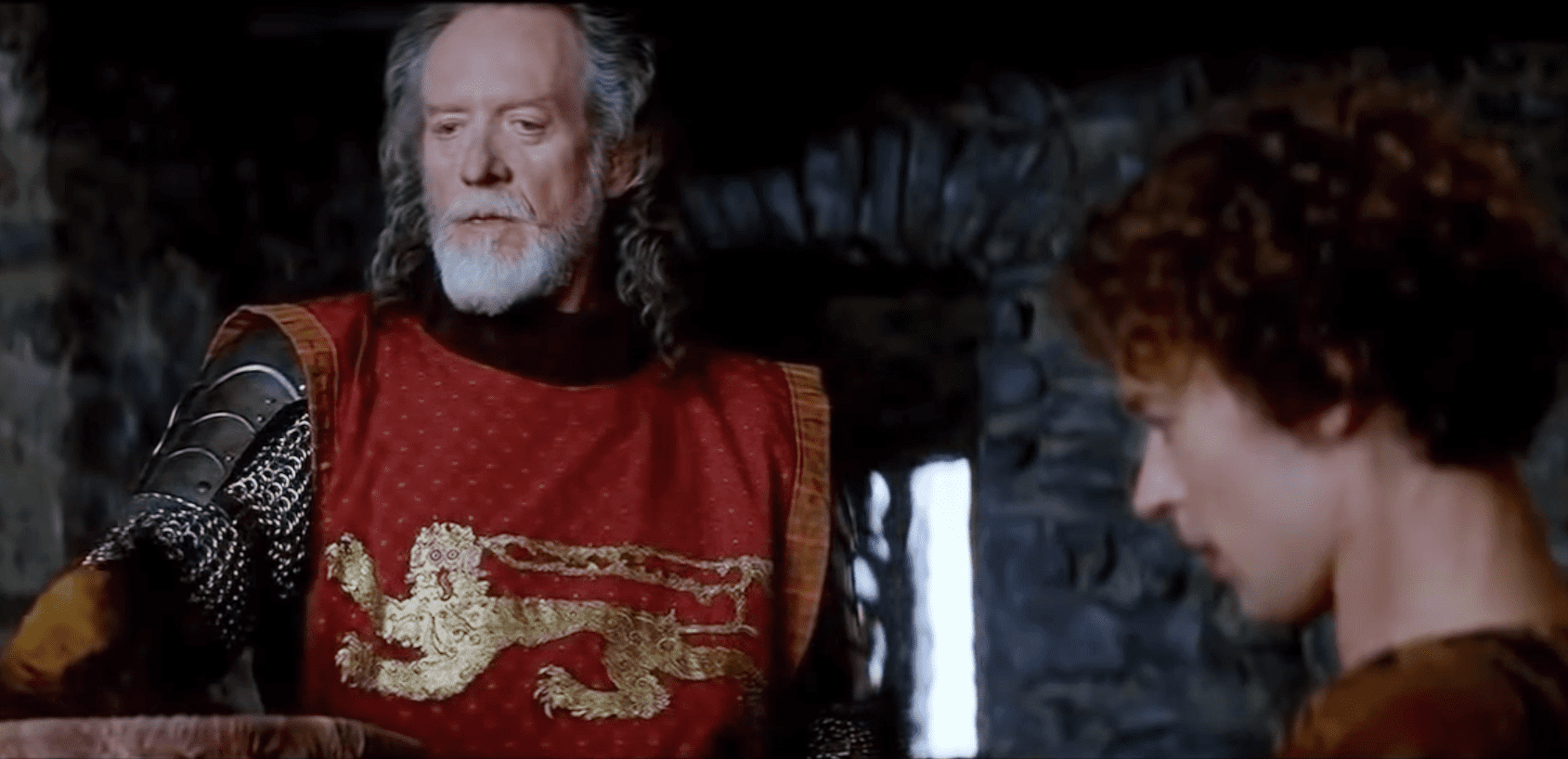 Braveheart ,Paramount Pictures
Braveheart ,Paramount Pictures
20. Paranoid, Bro?
Henry VIII loved collecting things, whether it was tapestries or meals during the day. But one thing he loved especially was weaponry. His collection included a total of 6,500 handguns, and a huge battle-axe which lay next to his bed while he slept. We can only imagine what a sight that must have been for his wives.
21. It Runs in the Family
The Stuart dynasty featured two women named Mary who were connected to a foreign monarch coming to England to take the Kingship, whether by force or by prearrangement. The first, Mary Stuart, is better remembered as Mary Queen of Scots, whose son, James VI of Scotland, became James I of England when Queen Elizabeth I died.
The second of these Mary Stuarts was married to her cousin, William of Orange, ruler of the Netherlands. William would invade England alongside his wife and lead the Glorious Revolution of 1688, which crowned them both as joint monarchs of England.
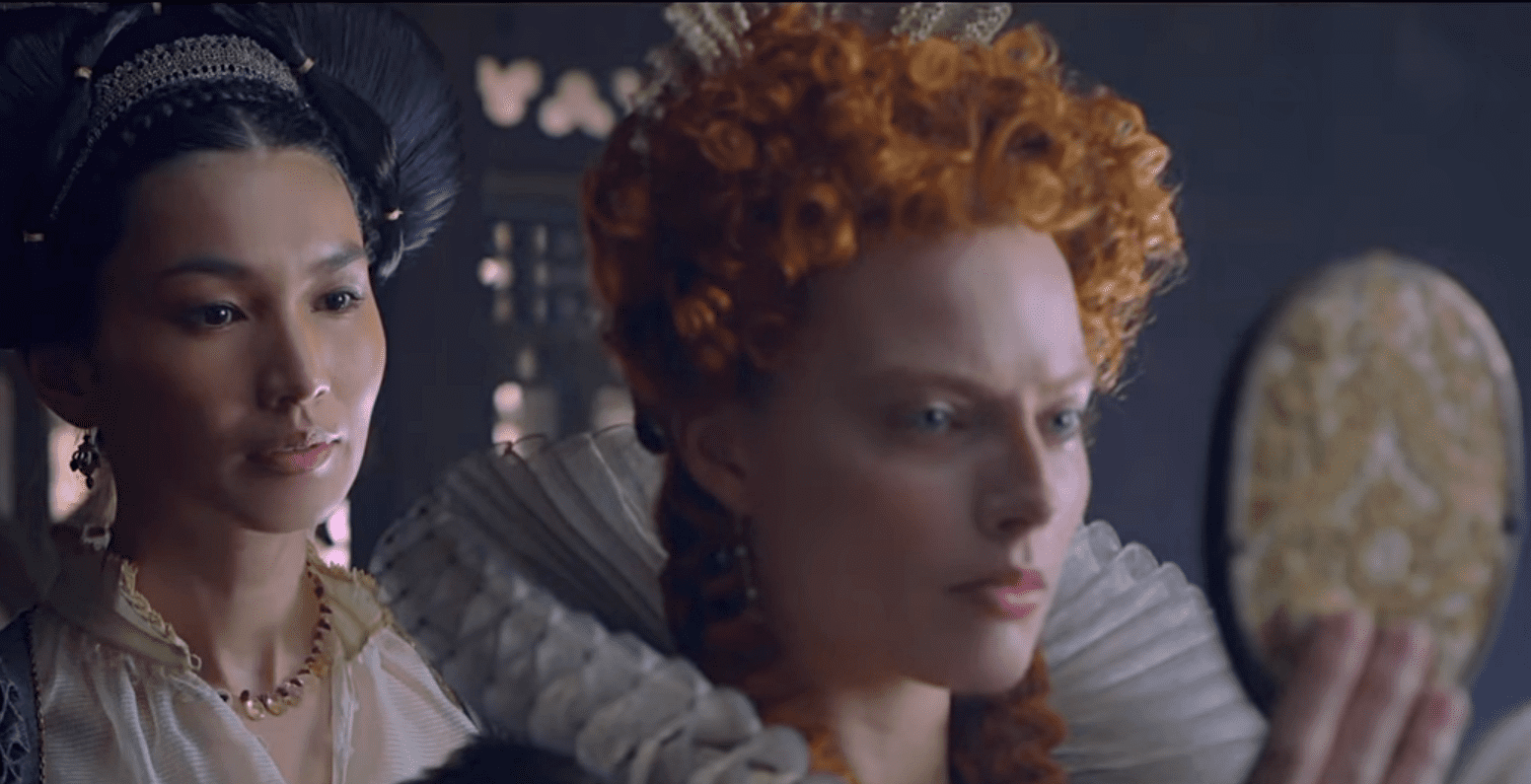 Mary Queen of Scots (2018), Focus Features
Mary Queen of Scots (2018), Focus Features
22. Traitorous Tudors
The Tudor dynasty is maybe the most famous line of English monarchs. It began after the Battle of Bosworth in 1485 and ended with the death of Queen Elizabeth in 1603. However, despite their family being distant relatives of King Edward III, it was through an illegitimate female lineage. Thus, in the eyes of Medieval England, the Tudors' claim to the throne barely existed at all.
As a result, Henry VII spent most of his reign defeating rival claimants who saw him as a usurper.
23. No Wonder She Became Bloody Mary
Mary I, commonly known as Bloody Mary, was the eldest child of Henry VIII and his first wife, Catherine of Aragon. She was declared illegitimate when her father divorced her mother and sent her away. But that wasn't even the worst part. Mary and Catherine weren’t allowed to see each other because they refused to acknowledge the new Protestantism or Henry’s new queen, Anne Boleyn.
Mary wasn't even allowed to attend her mother's funeral when she died. Safe to say she grew up with a few grudges.
24. Don’t Stop Me Now
Efforts were made to keep the staunchly Catholic Mary away from the English throne, but she couldn't be stopped. Henry VIII’s successor, his son Edward VI, died shortly after becoming king. He named Lady Jane Grey as his heir, but Mary was far more popular with the English than Lady Jane. Mary then deposed the would-be monarch and became Queen of England herself.
If you don’t count the short reigns of Jane and Empress Matilda, Mary I was the first Queen Regent of England.
25. History Is Written by the Victors
Mary I only got the nickname of Bloody Mary because of her persecution of Protestants in England. While more than 200 Protestants were indeed burned at the stake, Mary’s reputation for savagery and tyranny was greatly built up by Protestant writers of the time and in later years. Mary’s efforts to restore Catholicism were completely reversed after her death due to a lack of heirs, which led to Elizabeth I being crowned Queen and restoring Protestantism to favor.
26. Fashion Frenzy
Before she became the Virgin Queen, Elizabeth lived in penury, after her mother Anne Boleyn’s execution. Her father, Henry VIII, ignored and neglected her so completely that Elizabeth’s guardians had to beg the king for finances to provide Elizabeth with clothes that fit her. Later, when she became queen, Elizabeth collected more than 2,000 dresses for herself, and even that wasn’t enough.
She allegedly stole a dress from one of her maids of honor out of envy when she saw how good it looked.
 Elizabeth: The Golden Age (2007), Universal Pictures
Elizabeth: The Golden Age (2007), Universal Pictures
27. Progress Through Regress
After the execution of Charles I, England was placed under the rule of Oliver Cromwell, who had helped overthrow the monarchy. One of Cromwell’s decisions was to close all the theatres in England, despite their immense popularity. When the Stuart dynasty was restored after Cromwell’s death, Charles II re-opened the theatres, with a new twist.
For the first time, women could be actresses on stage along with the men.
28. A Friend in a High Place
Charles II was crowned after the Stuart dynasty was restored to power in England, and he decided to have fun with it. He was young, popular, and cemented his image as a hedonistic rogue in power. However, he also provided some more long-lasting contributions to English history. He was a patron of both the arts and sciences, and personally supported Sir Christopher Wren, who would go on to reconstruct London after the Great Fire of 1666.
Charles also founded the Royal Observatory and supported the scientific-focused Royal Society, whose members included Isaac Newton and Robert Hooke. Sounds like a cool guy!
29. Born in Battle
Just like many kings of England, Edward IV had to fight for his throne, but he managed to go the extra mile by fighting one of the bloodiest battles ever fought on English soil. The Battle of Towton, fought between the forces of Edward of York and those men loyal to Henry VI, involved up to 60,000 soldiers and resulted in 28,000 deaths.
That was the equivalent to 1% of the entire English population at the time!
30. All That Glitters…
Elizabeth I of England presided over a Golden Age in England’s history. Peace and prosperity were the order of the day, and national pride grew to an all-time high under her reign. However, she managed to outlive this Golden Age as the latter part of her rule bore witness to many problems arising. Conflicts with Spain and Ireland caused taxes to increase, which wasn’t helped when harvests fell short of expectations.
Elizabeth fell into a personal depression with the deaths of several of her closest friends, and she eventually passed away at 69 years old, leaving no heirs, and putting an end to the Tudor dynasty.
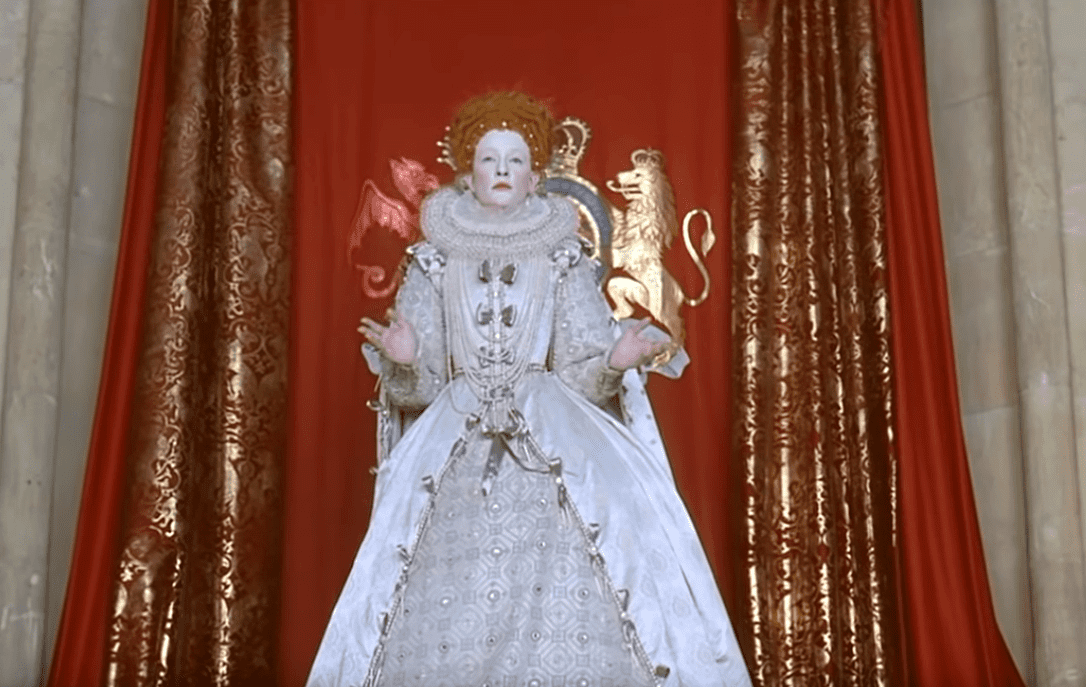 Elizabeth (1998), Working Title Films
Elizabeth (1998), Working Title Films
31. Richard the Record-Holder
Richard III of England holds a few records to this day. His rule as king was the shortest reign of all the crowned rulers of England after 1066. He was also the first English king since 1066 to die on a battlefield. We have yet to determine, however, if he was the only English King ever to be buried in a parking lot—at least, that's where his remains ended up, as was discovered in 2012 in Leicester.
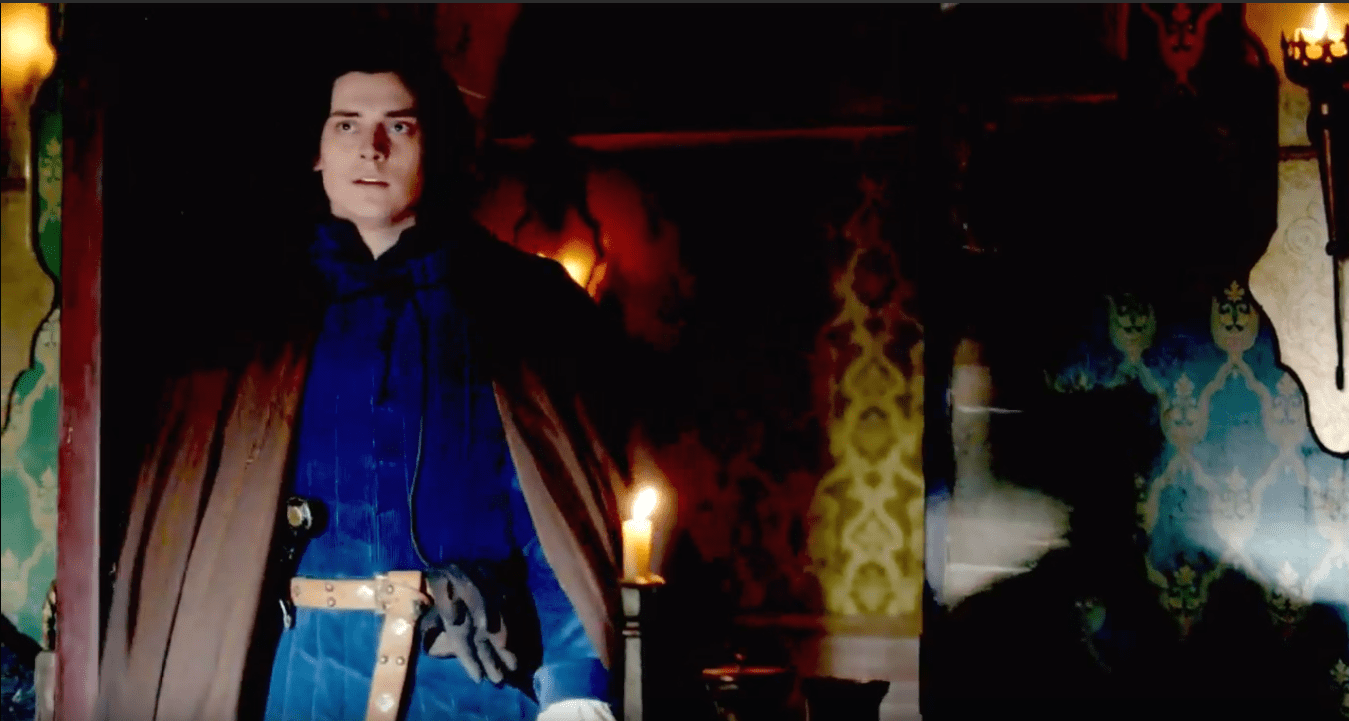 The White Queen, BBC Drama Productions
The White Queen, BBC Drama Productions
32. Family Feuds
Henry II of England was not a popular king during his lifetime. In fact, he spent the last years of his life putting down violent rebellions by his own sons against himself or each other. Interestingly, the son who arguably gave him the most grief was Prince Richard (later known as the Lionheart) while his favorite son was Prince John (yes, that Prince John).
John was loyal to his father for a long time until the very end of his life, when he joined Richard in negotiations with the King of France against their father. Their betrayal affected the king in more than one way: it’s said that the shock of John’s betrayal was what caused Henry’s final collapse and eventual death.
32. England: Total War
The Stuart monarchy lost popularity quickly during the reigns of James I and his son, Charles I. Eventually, the camel’s back was broken and civil war erupted between the forces loyal to Parliament and those loyal to the Crown. The English Civil War resulted in nearly 200,000 men dying on the battlefield or of injuries sustained on the battlefield.
To put it another way, 10% of the entire adult population of England met their end during the English Civil War. It was proportionally the most destructive war England ever fought.
33. Equal Opportunity Execution
In the days when Henry VIII was getting ready to burn all the bridges in the world by divorcing his wife to marry Anne Boleyn, one woman turned to prophesy to stop him. In 1532, a Catholic nun (and mystic) named Elizabeth Barton prophesied that if the King married Anne Boleyn, he would die and go to Hell. She was promptly arrested by the next year and forced to admit that she’d made it all up (which, let's be fair, she probably did).
Barton was beheaded for her treason and her head was put on a spike on London Bridge. She remains the only woman in history to have her head decorate the bridge.
34. Awkward Funeral
William the Conqueror was more successful in life than he was in death. First, he likely died after the pommel of his saddle injured him and ruptured his intestines. Not a great look. Then, during his funeral, a man interrupted the proceedings by complaining that the church they were in was built on his family’s lands without giving any compensation in return.
As if that wasn’t bad enough, William’s body had swollen, and couldn’t fit inside the sarcophagus that had been built for him. Attempts to shove him in caused the body to burst, creating an unbearable odor during the rest of the funeral.
35. What Did the Scots Ever Do to You?
Edward I of England, AKA Edward Longshanks, has become known as the mortal enemy of the Scots, but we’re quite confident that that’s exactly how he would have wanted to be remembered. In his own lifetime, he was known as the Hammer of the Scots, and that’s before even getting to mention his utterly disturbing final request.
On his deathbed, Edward demanded that his body should be boiled after death, and his bones taken into battle against the Scots. Sadly(?), his request was not carried out, and this chilling, and admittedly pure metal, episode of history was denied to us. We can only imagine how bitter Edward I's ghost is about that.
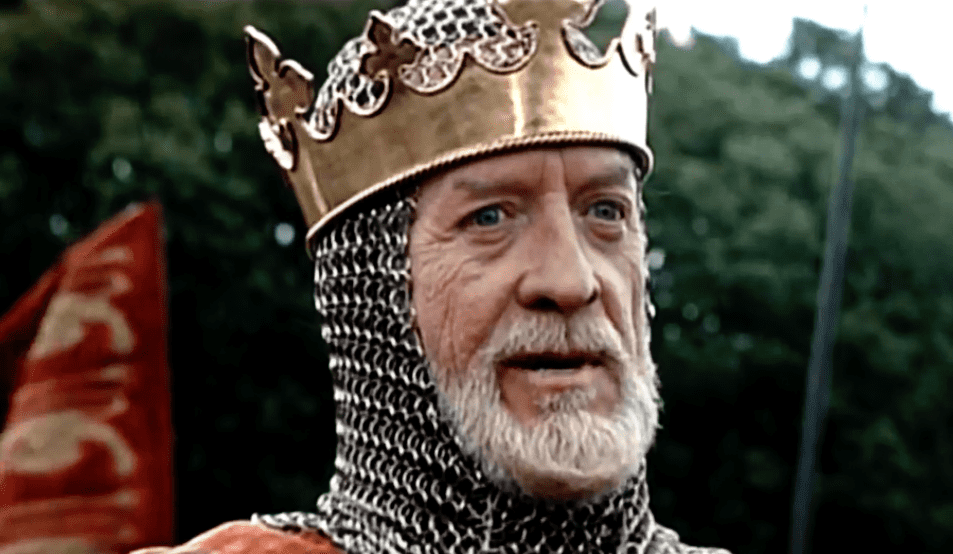 Braveheart ,Paramount Pictures
Braveheart ,Paramount Pictures
36. Annus Horribilis
The marriages of Queen Elizabeth II’s three divorced children all ended in one tragic year: 1992. Princes Charles and Andrew, and their wives Princess Diana and Sarah, Duchess of York, were dragged through the media by tabloids, which in Britain can be even more sensational than those in the US. The affair between Prince Charles and Camilla Parker-Bowles as well as his wife Princess Diana’s infidelities were much-publicized.
In addition, on November 20, 1992 (the Queen’s wedding anniversary) a fire broke out in Windsor Castle, the Queen’s residence, causing extensive damage. Elizabeth would later refer to 1992 as annus horribilis, Latin for “horrible year”.
37. Top Secret
In 1999, a successful request made under the Freedom of Information Act revealed that the NSA, the major intelligence agency for the United States, had placed Princess Diana under surveillance. Because of national security concerns, the contents of her file cannot be revealed.
38. Who Wants That Attention?
Princes Harry and William were just in the early teens when they woke up to the news their mother, Princess Diana, had died in a car crash. Amidst the royal family’s polarizing response to Diana’s death in 1997, it was their grandfather, Prince Philip, who convinced William and Harry to walk behind her coffin. When the young princes were apprehensive, Philip reportedly told his eldest grandson, “If you don’t walk, I think you’ll regret it later. If I walk, will you walk with me?”
At the funeral, Philip, William, Harry, Charles, and Diana’s brother followed the bier all the way from Westminster Abbey to Buckingham Palace, as millions watched.
39. Nice Ink
King George V was a sensitive boy raised to carry the burden of the entire British Empire on his back. But few people know that hidden underneath his proper demeanor and noble regalia was a royal secret: George had a tattoo. Though we might find this shocking today, tattoos were quite popular in England in the 19th century. While he was on a visit to Japan in 1881, George had a local artist give him a blue and red dragon on his arm right before he was scheduled to meet the Emperor. Pretty cool, George.
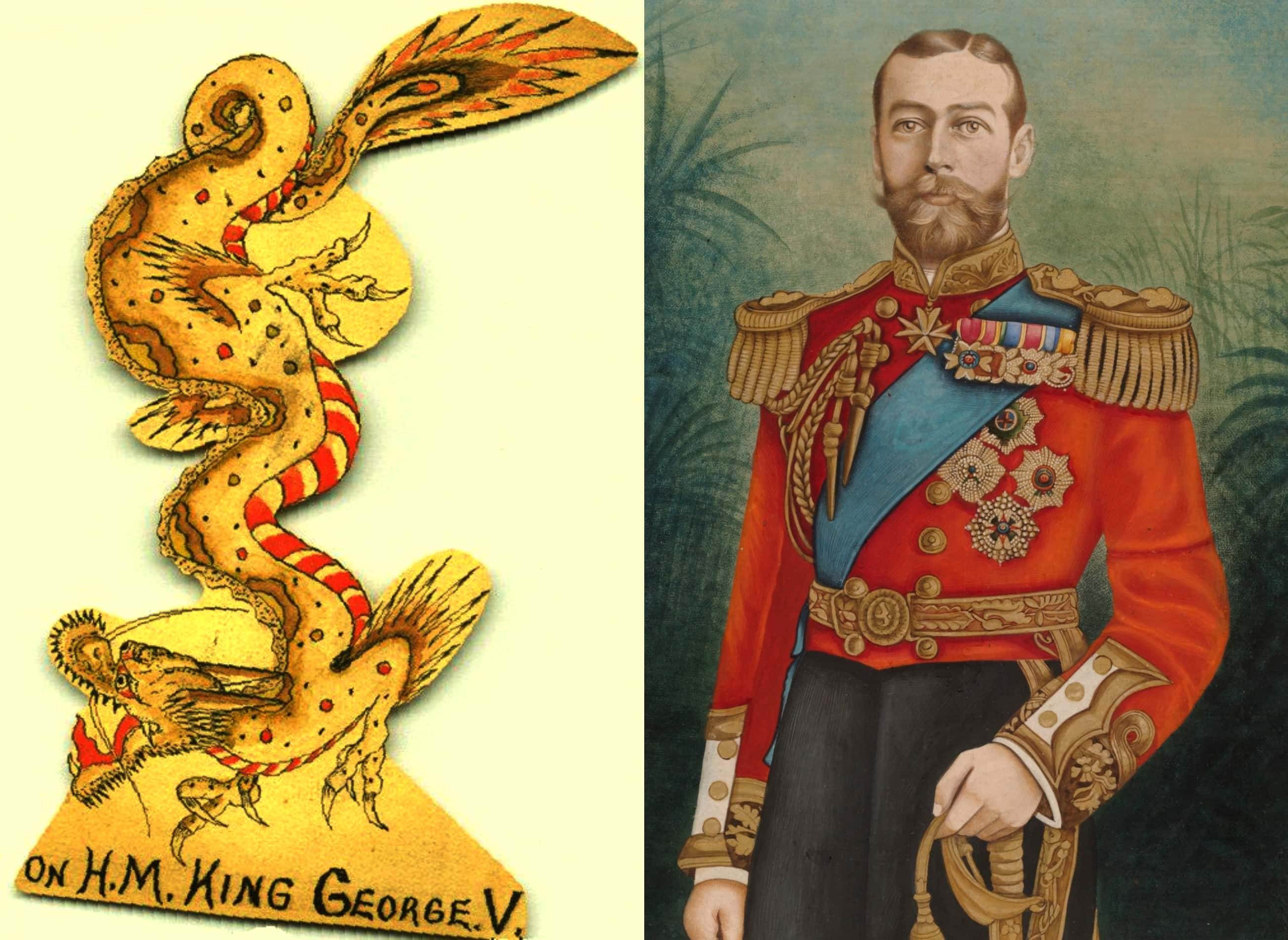
40. A Family Affair
It’s widely known that, before he married Anne Boleyn, Henry VIII carried out a long affair with Anne’s sister, Mary. Less famously—though more luridly—Henry was said to have also slept with Anne’s mother, Elizabeth.
41. No Love Lost
Anne Boleyn showed no lack of disdain for her predecessor, Catherine of Aragon. She refused to attend Catherine’s funeral, prevented Catherine’s daughter Mary from attending, and spent the day parading around the castle in bright yellow. Rumors spread that Anne had threatened to murder Catherine and Mary, and Catherine’s death led many to suggest that Anne had finally made good on her threat.
42. Heart of Darkness
For its time, Catherine of Aragon’s cause of death was ambiguous. Her embalmer noticed the corpse was in perfect health—save for her heart, which had turned black. That led some people to whisper about poison. Today, historians agree generally agree that Catherine died of heart cancer, which—considering the circumstances of her life—appears too poetic to be true.
43. That Didn’t Take Long
The day after Anne Boleyn’s beheading, Henry got engaged to Jane Seymour, Anne Boleyn’s lady in waiting. While she was publicly proclaimed queen, her coronation never went ahead due to an outbreak of plague.
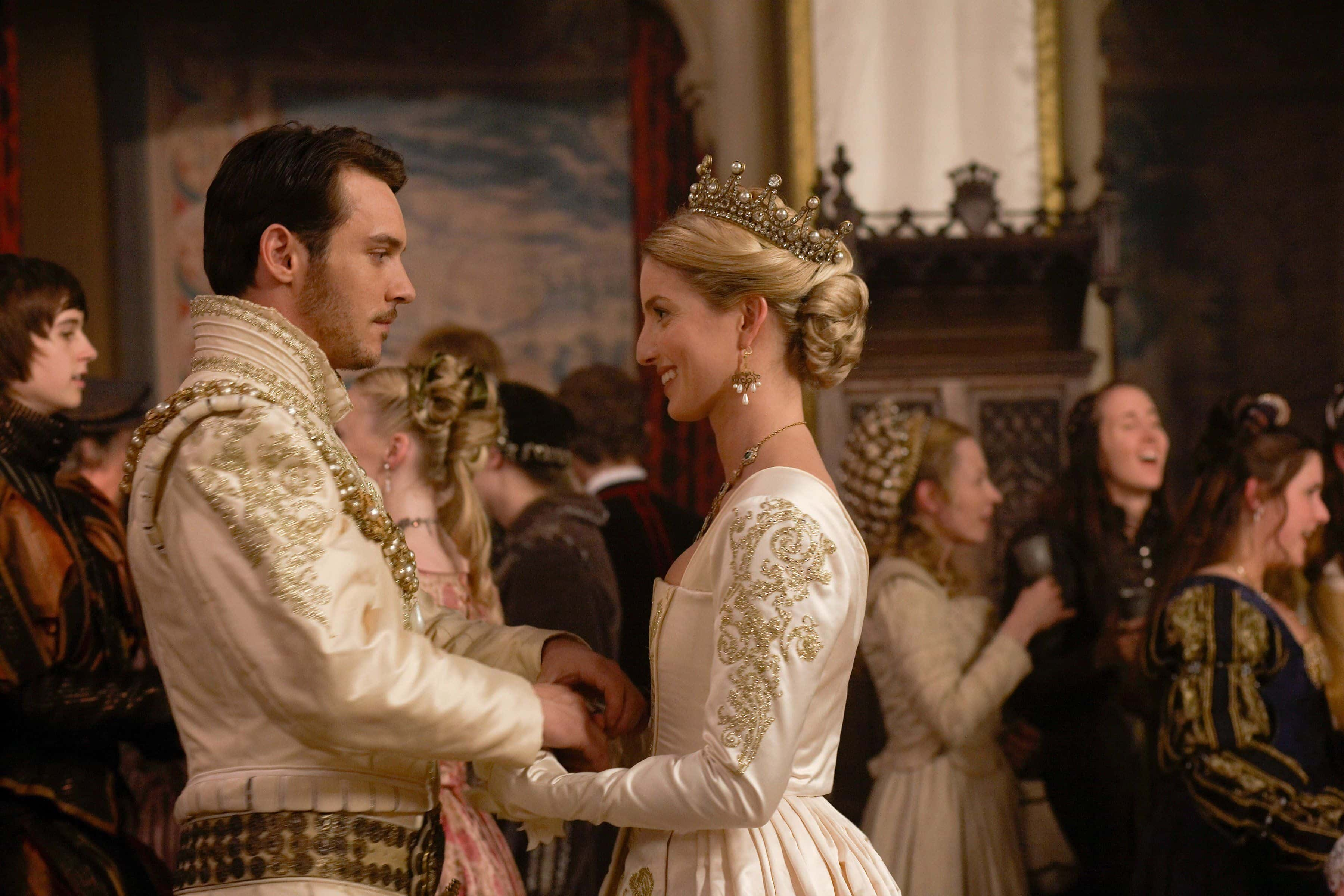 pinterest
pinterest
44. A Notable First
Anne Boleyn is notable for being the first Queen of England to be publicly executed. Once the King's men found her guilty, she was originally sentenced to burn, but Henry VIII ever-so graciously changed it from burning to beheading. He even called in an expert swordsman to carry out the execution instead of using the average axeman.
45. False Charges
Anne Boleyn was accused of adultery with a handful of men, including her brother George. She was also charged with plotting to murder the king so she could marry one of her lovers. Modern historians agree that the charges brought against Anne Boleyn that led to her execution were false and unconvincing, and that Henry had her killed just because she didn't give him any male children.
46. Hail Mary
After four days of imprisonment in the Tower of London, Anne Boleyn bundled up a package and gave it to her jailer to deliver to the king. It was a letter; her very last to Henry VIII. In it, she plead for mercy, writing that "never prince had wife more loyal in all duty, and in all true affection, than you have ever found in Anne Boleyn." She also begged him to think of their daughter Elizabeth—and made one final heartbreaking request.
She humbly asked that Henry, if she was found guilty, would still spare the lives of her brother and the other men accused of being her lovers. It's a gut-wrenching revelation: at her core, Boleyn was truly selfless. Tragically, her plea didn't work. Boleyn's brother George and the other accused men were executed.
47. Big Brother's Watching
Throughout his reign, Henry VIII was plagued by the scandalous exploits of his younger sister, Margaret Tudor. First, she was widowed in 1513 when her husband was slain by forces commanded by her own sister-in-law. A year later, she eloped with a new man—but the union would soon turn into a living nightmare. When she married the Earl of Angus, she gave up her right to regency in Scotland and had to flee back to England with the help of her brother Henry VIII.
When Margaret returned after a year to be with her husband, she made a disturbing discovery. He was living with another woman in their home.
48. Missing You, Dad
The future Queen Victoria’s father, Prince Edward, sadly passed away when Victoria was less than one year old. Her mother, as well as her mother's rumored lover, Sir John Conroy, would act as her guardians from then on. Victoria’s childhood was an isolated one. Her mother (also named Victoria) and Sir John Conroy came up with a parenting system that prevented young Victoria from seeing people that weren’t pre-approved by them first.
This system, known as the Kensington System, was done to make Victoria dependent on them, which they hoped would continue into her reign as monarch.
49. Stay Out of My Life!
In order to keep Sir John Conroy in a close and influential position in Victoria’s life, he and Victoria’s mother tried to persuade her to make him her private secretary. Victoria refused every time, however. In fact, when she became queen, she had Conroy “banned from her presence.” Honestly, kudos to her!
50. Just in Case
In the long years after the death of her beloved husband Prince Albert, Queen Victoria continued to insist that his personal rooms in Buckingham Palace be kept prepared for him in case he somehow returned. A bowl of hot water for shaving purposes was always placed in the room, and a new change of clothes was always laid out on the bed.
Sources: 1, 2, 3, 4, 5, 6, 7, 8, 9, 10, 11, 12, 13, 14, 15, 16, 17, 18, 19, 20, 21, 22, 23, 24






